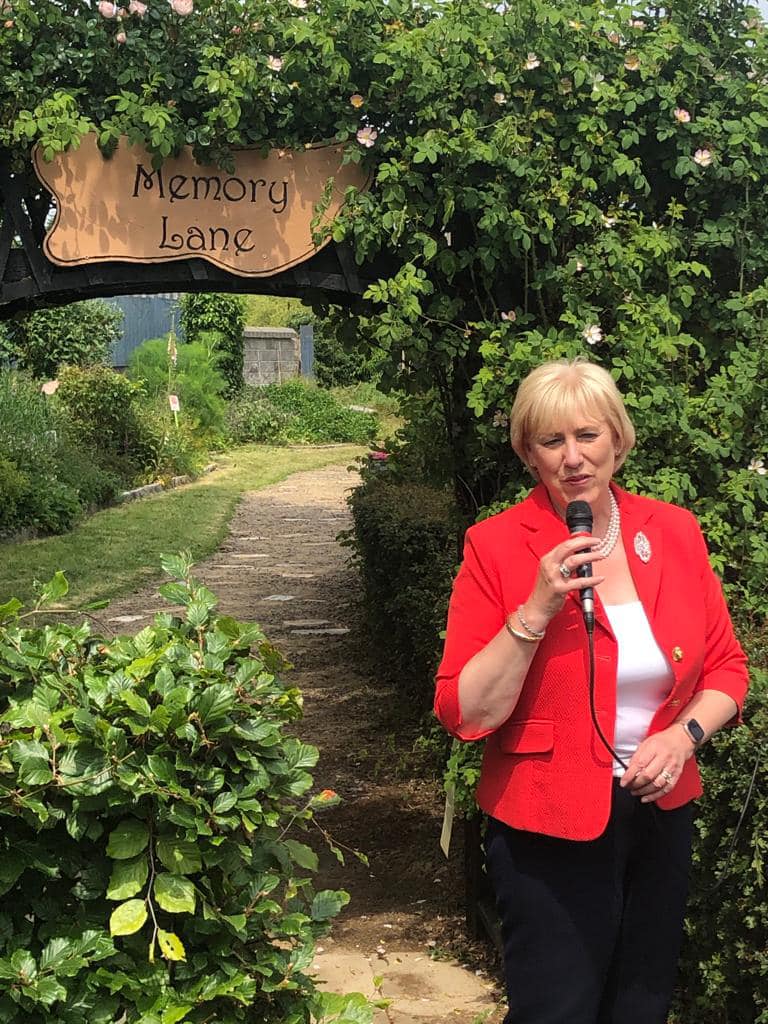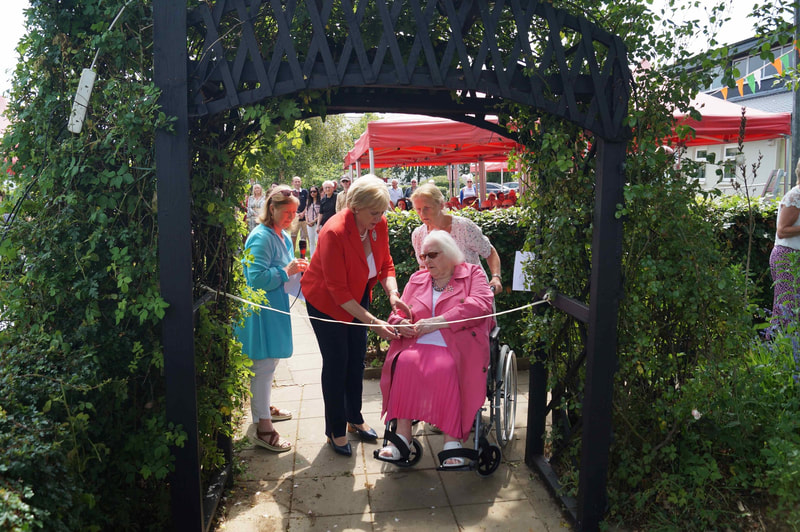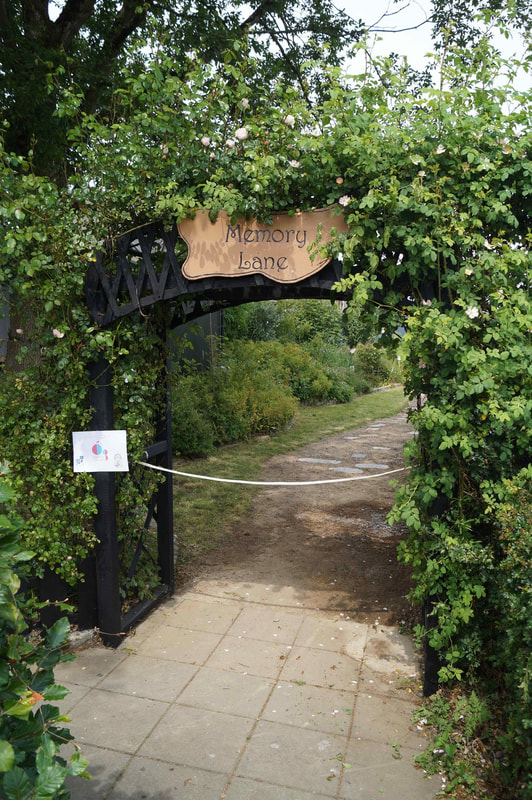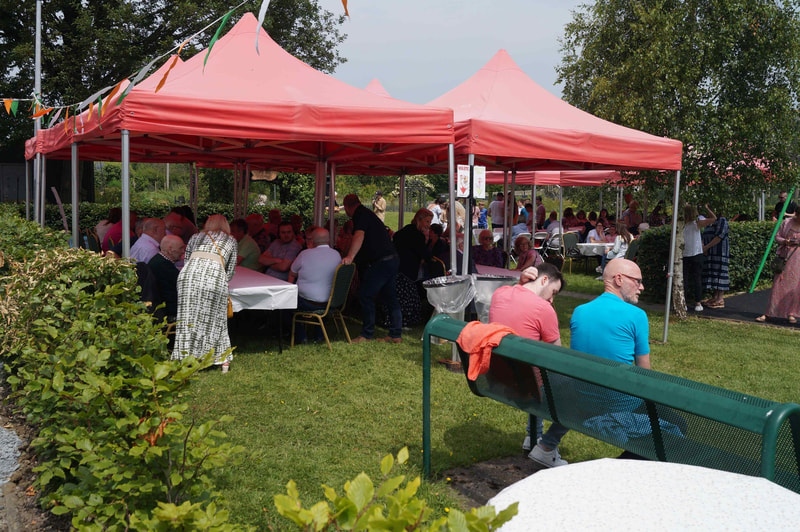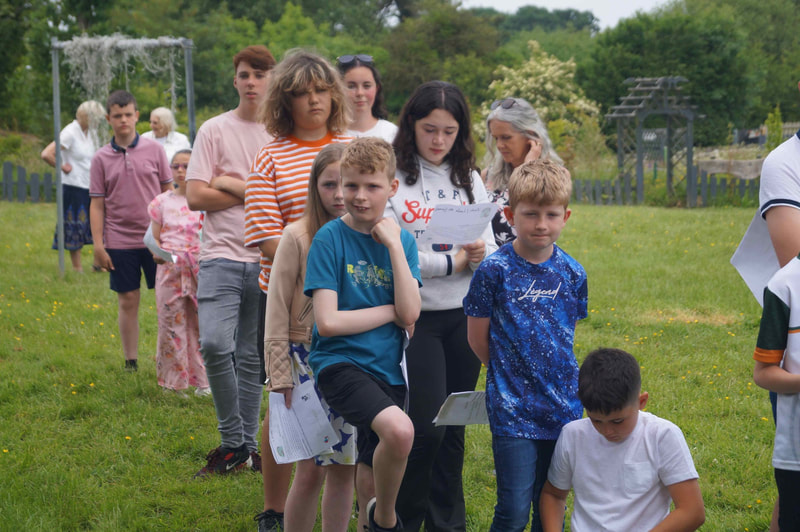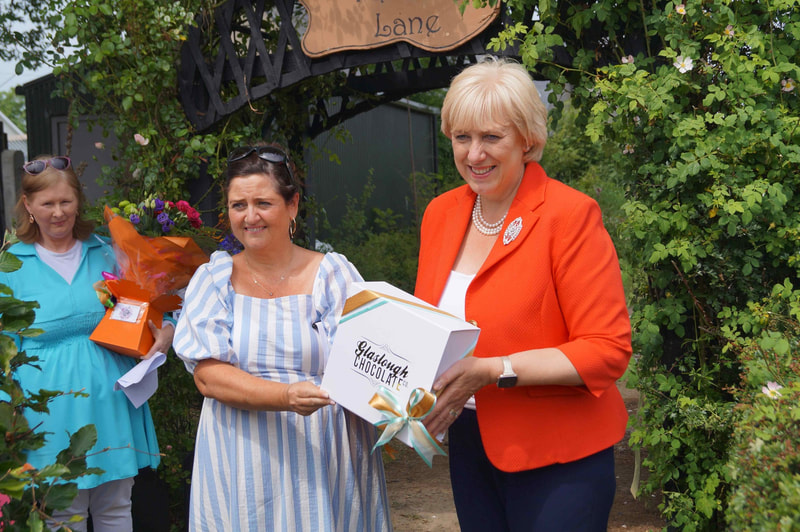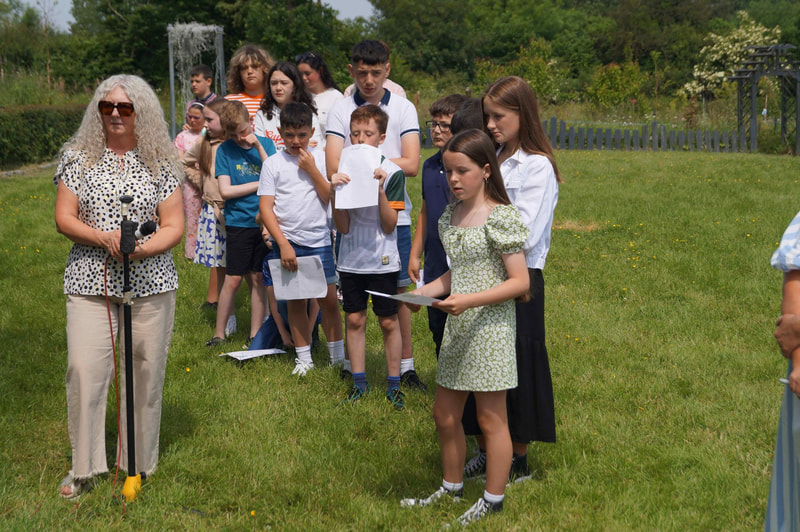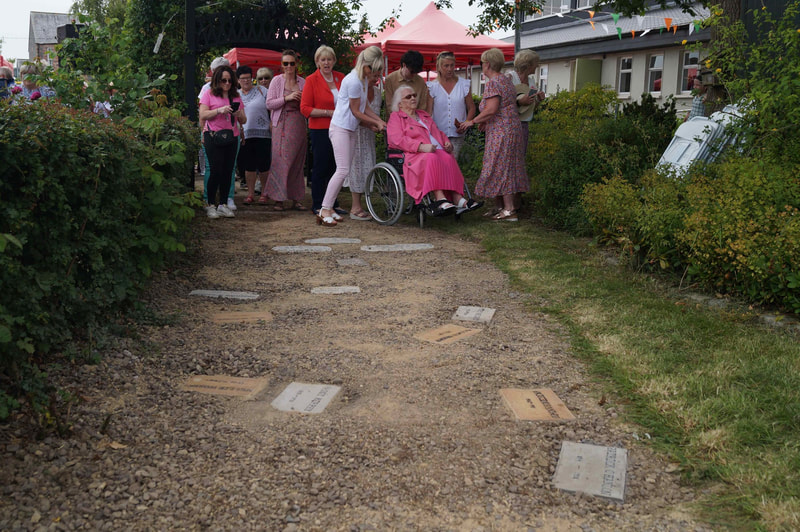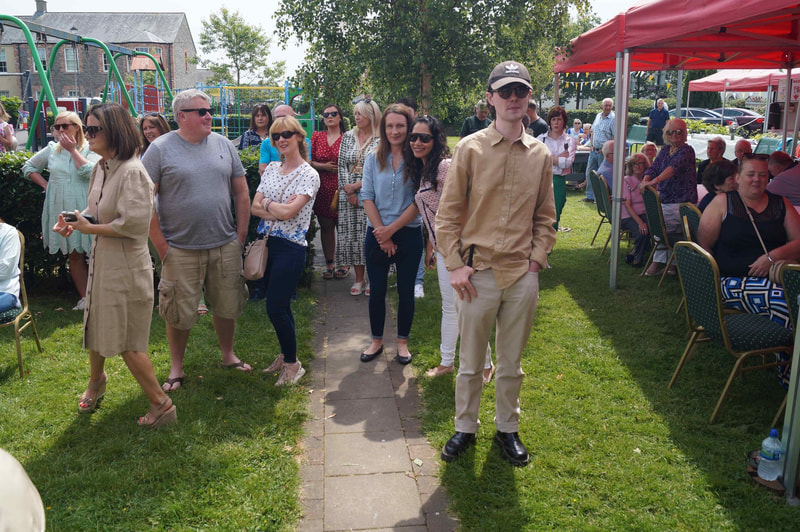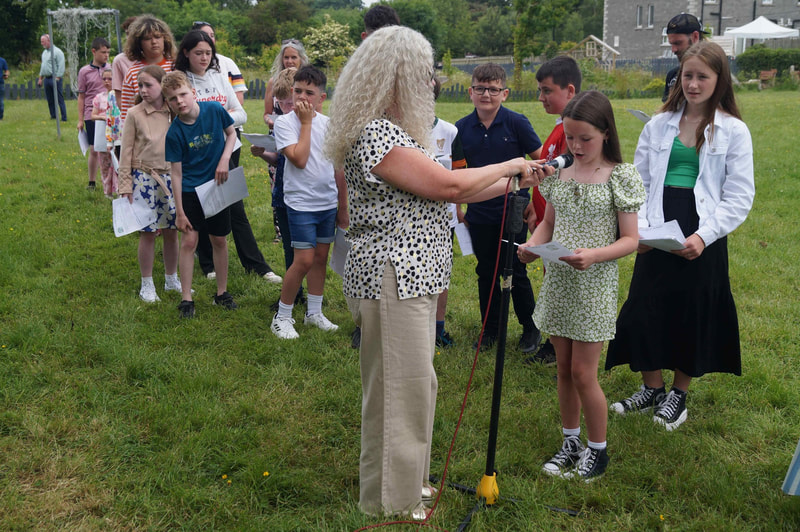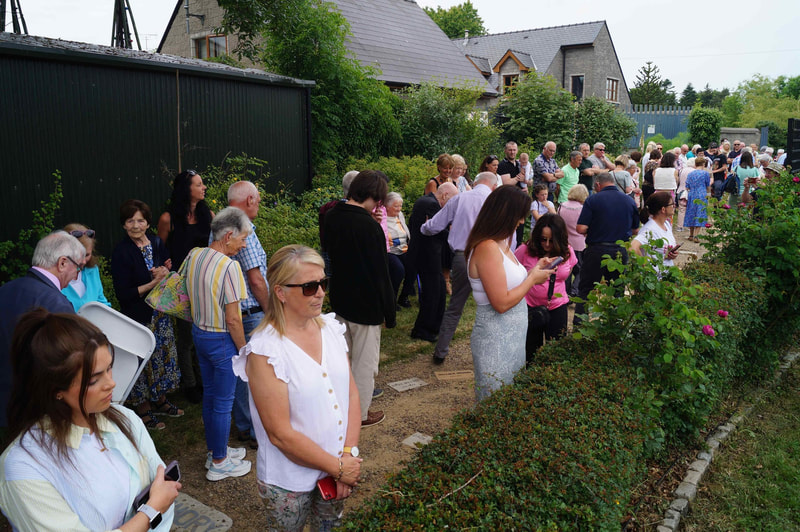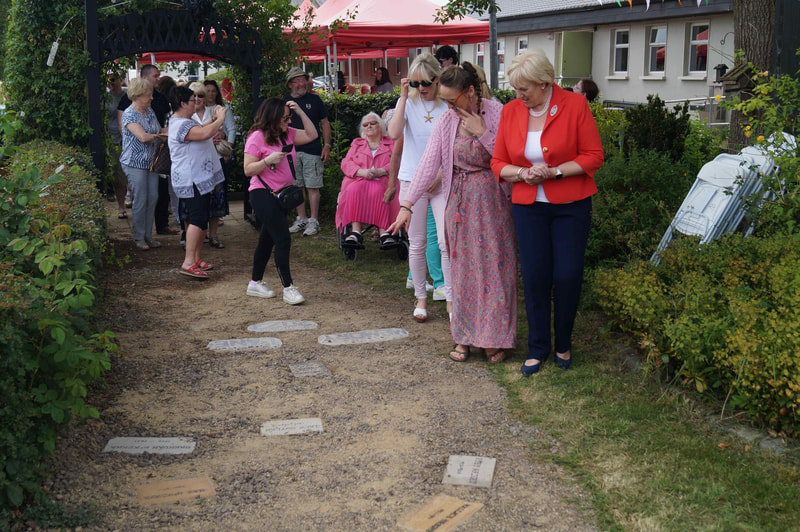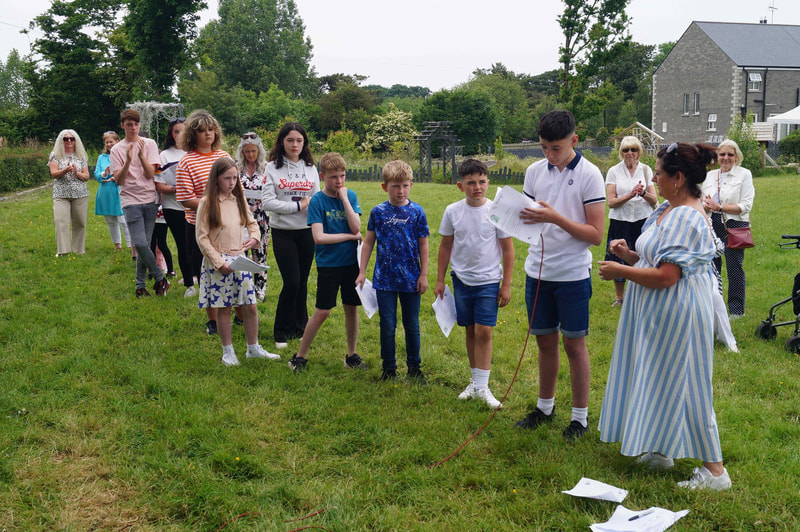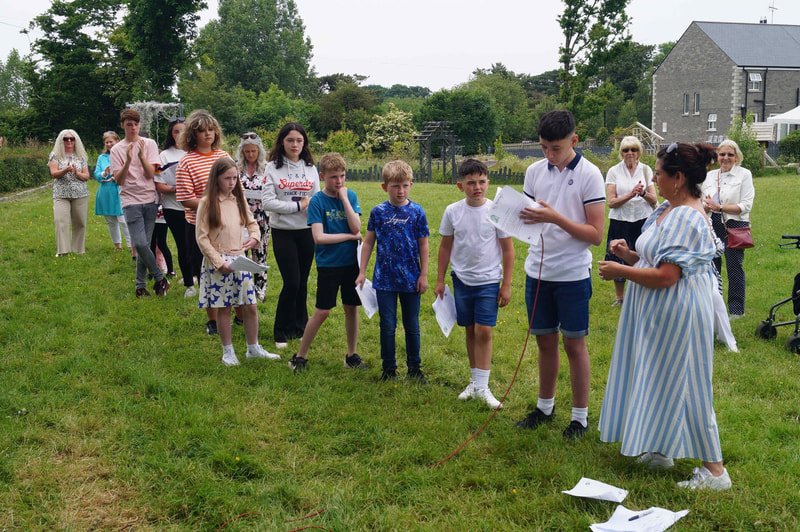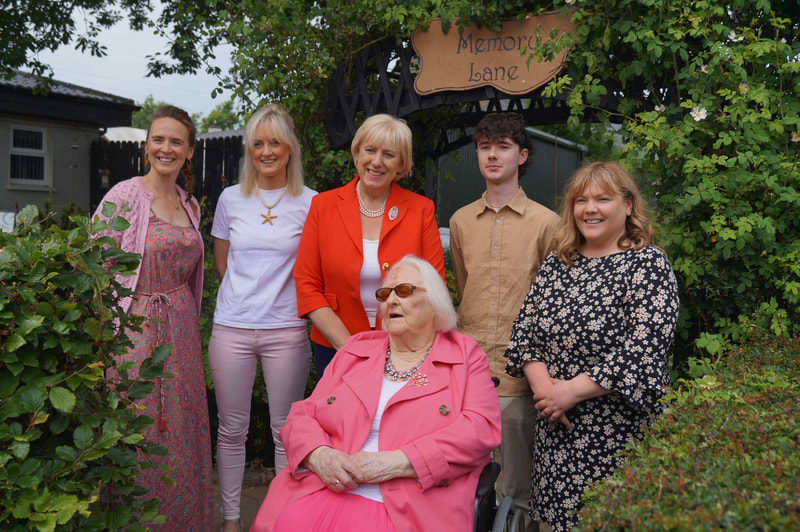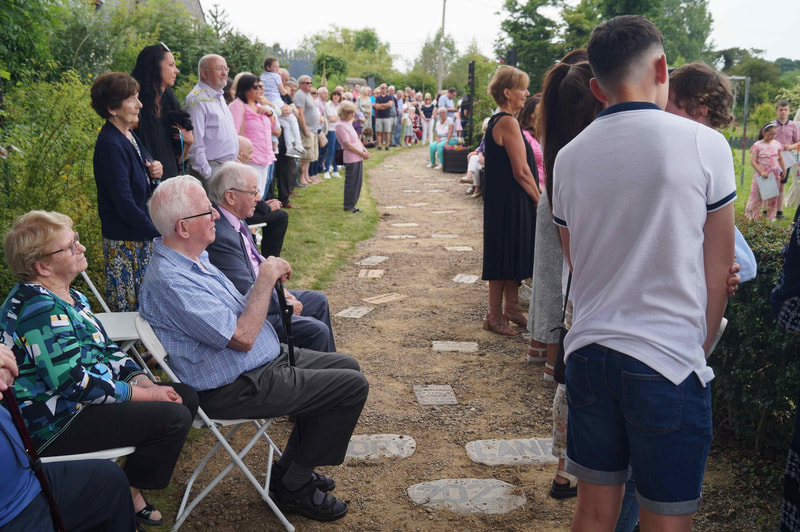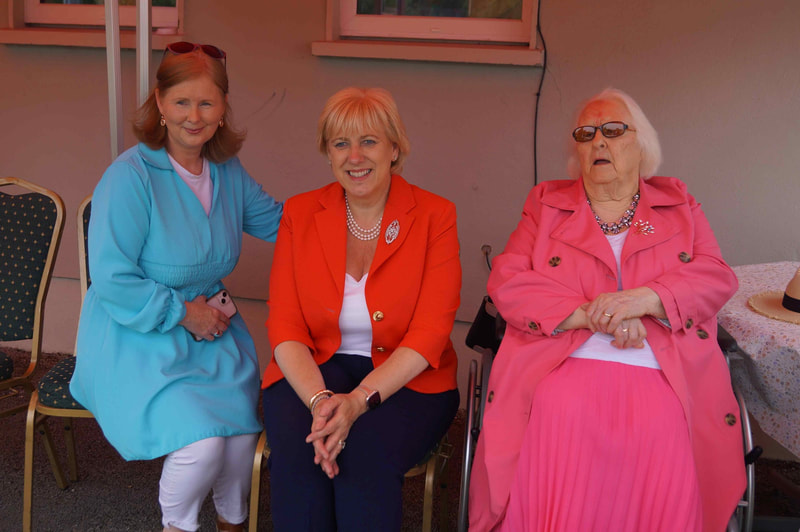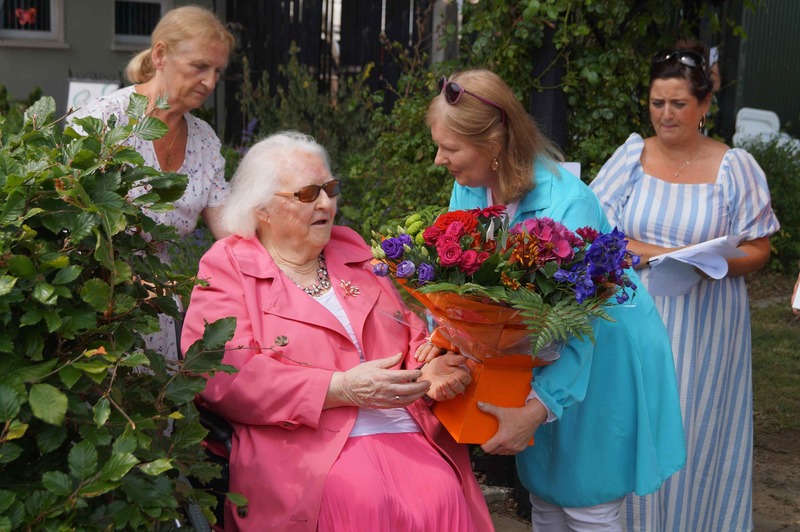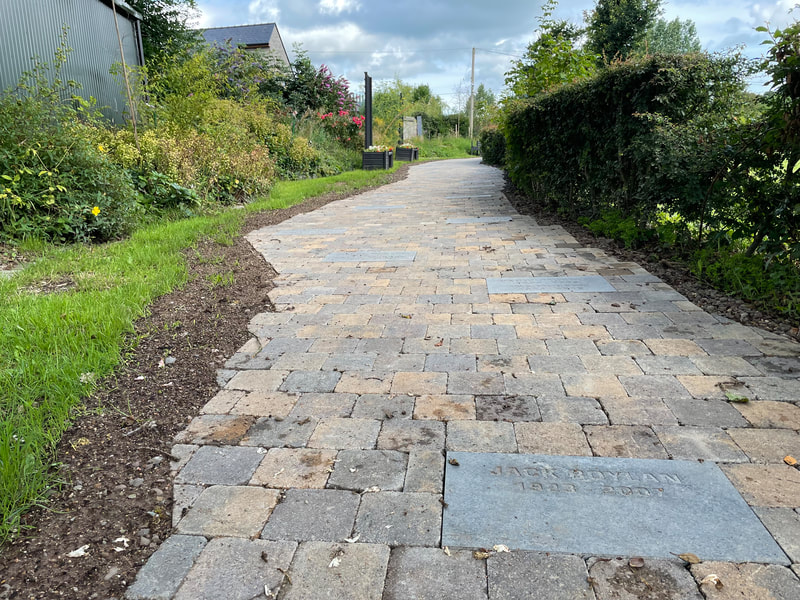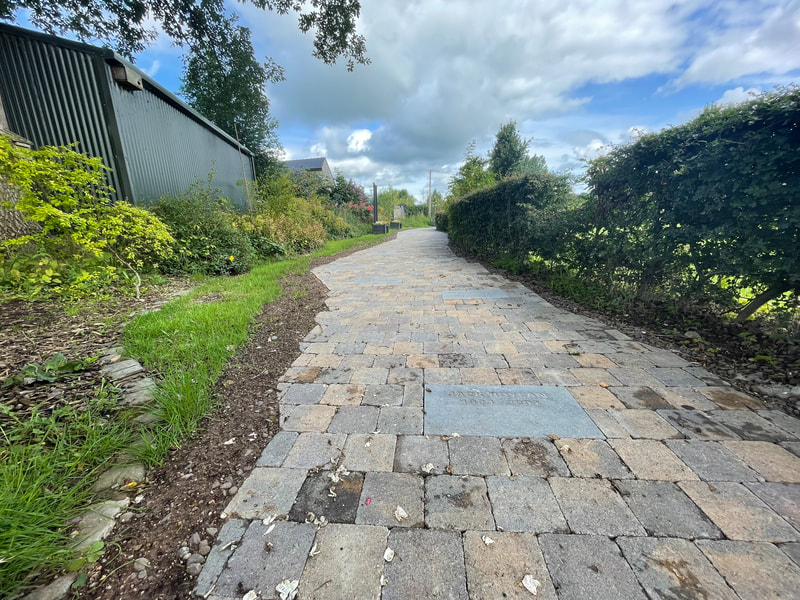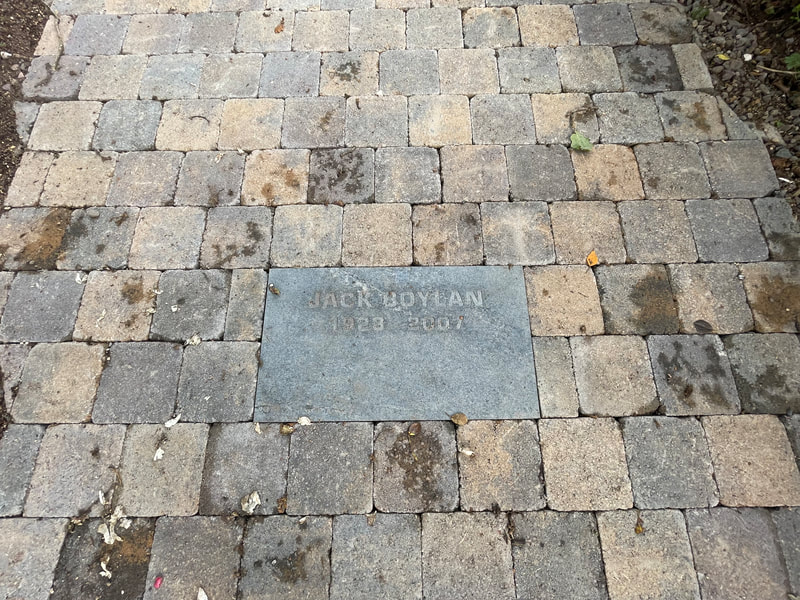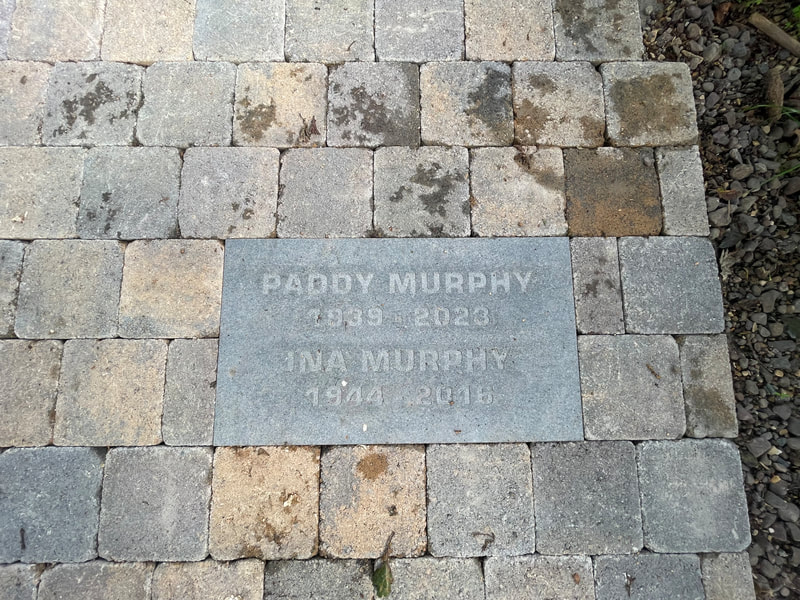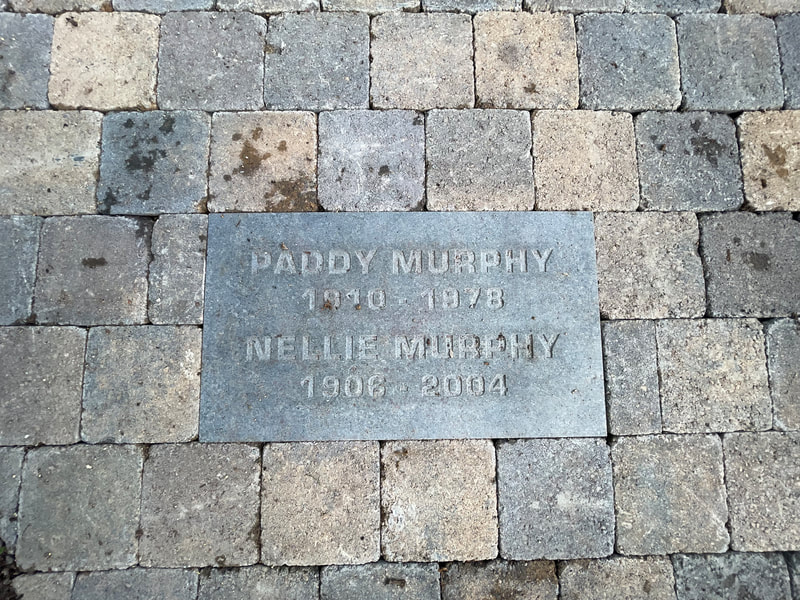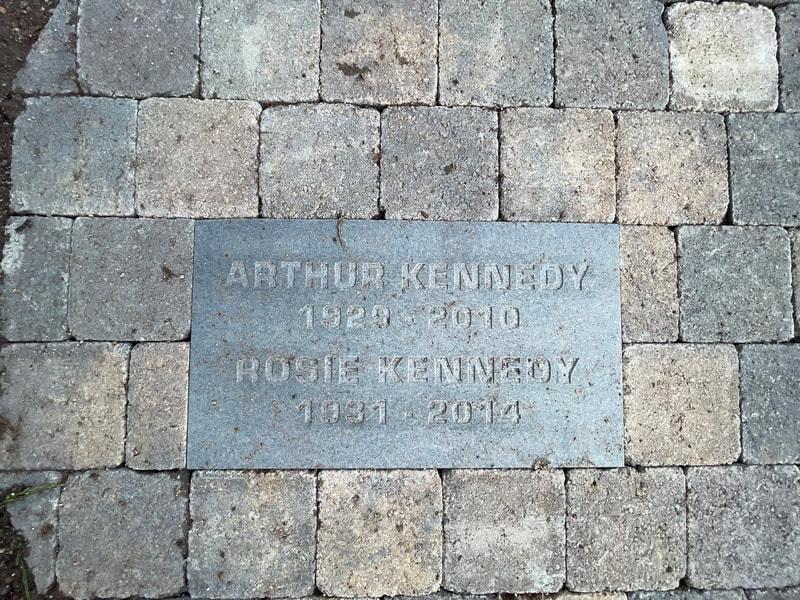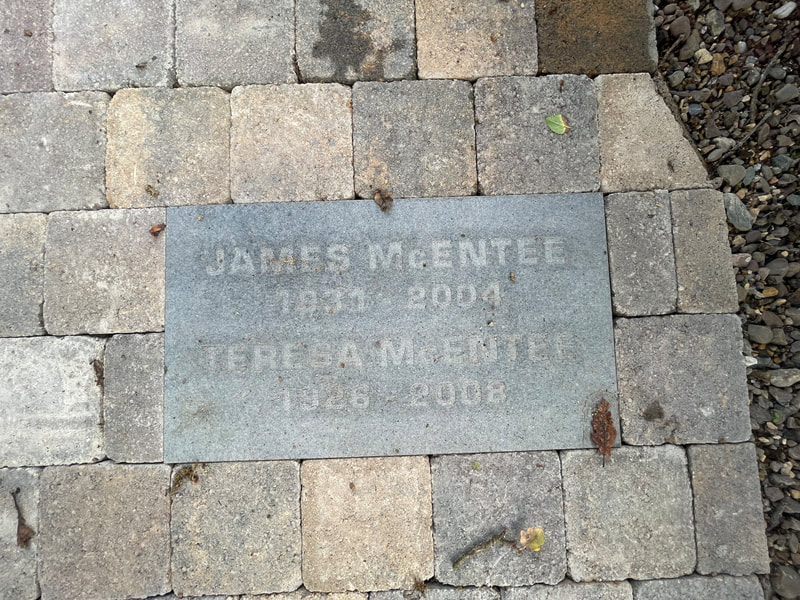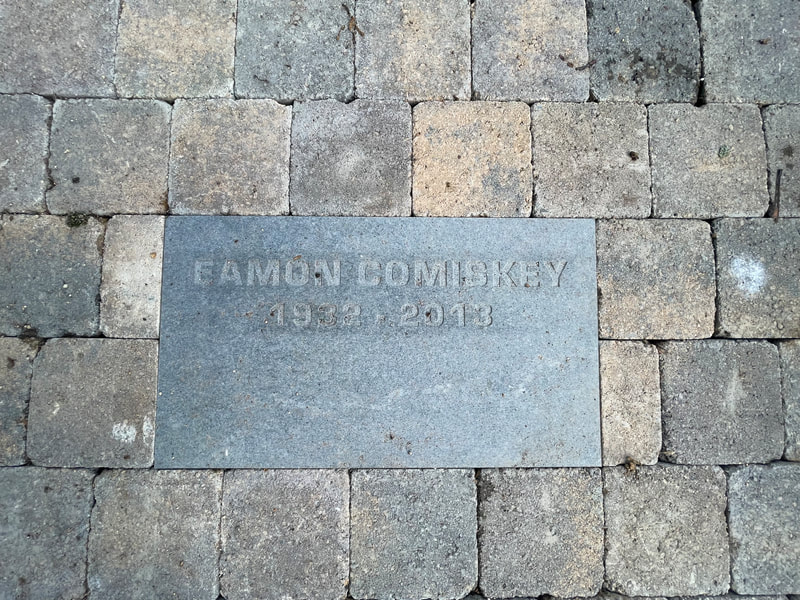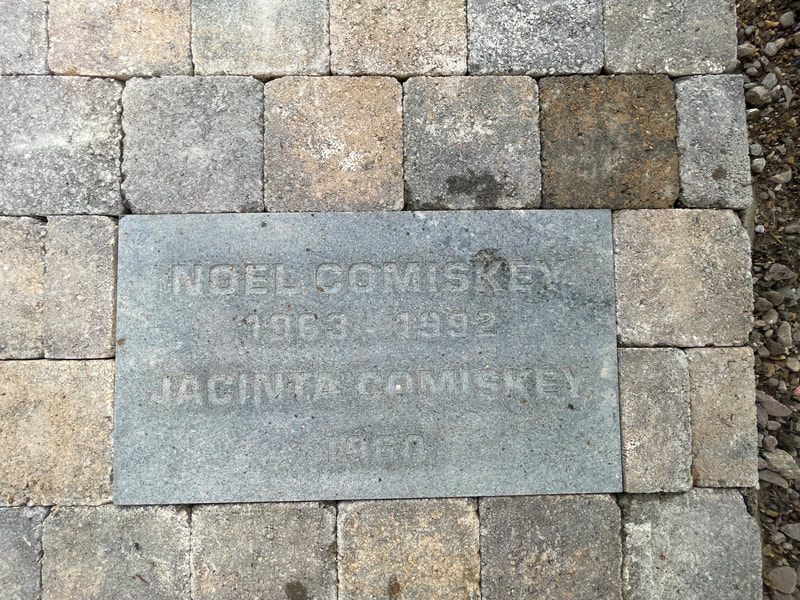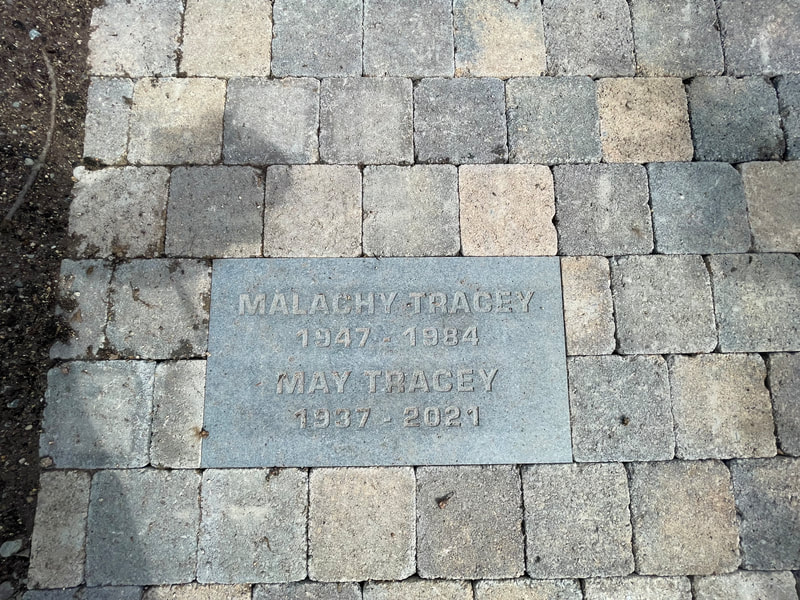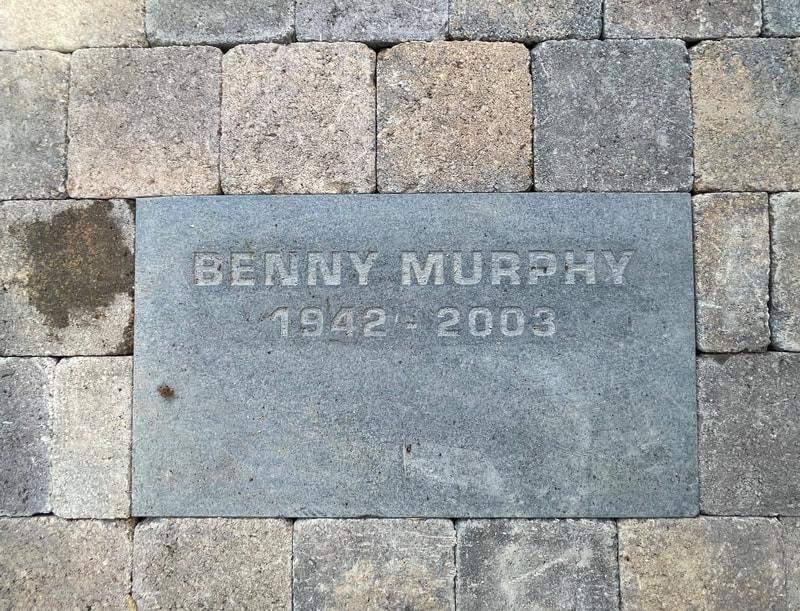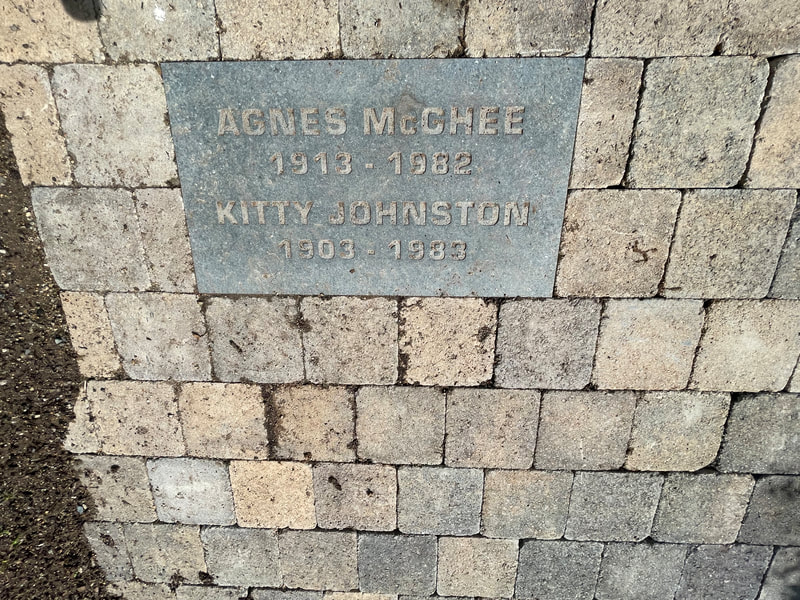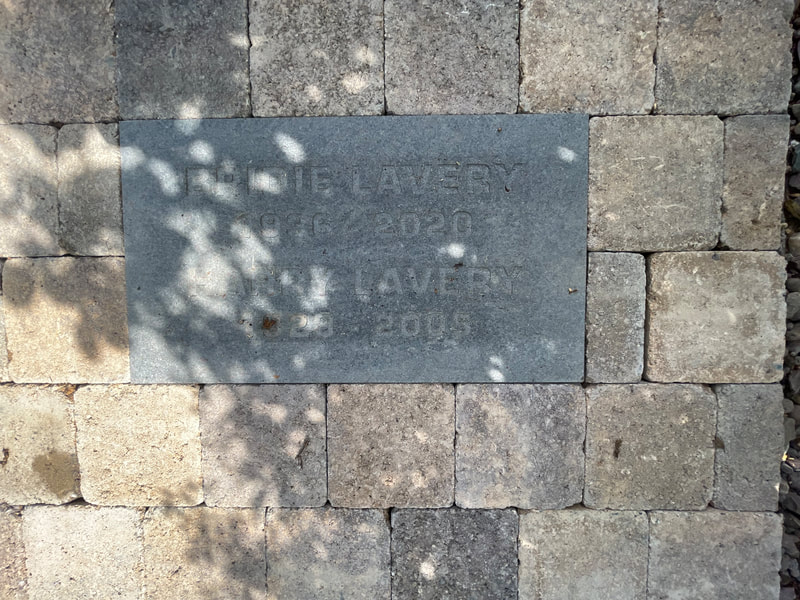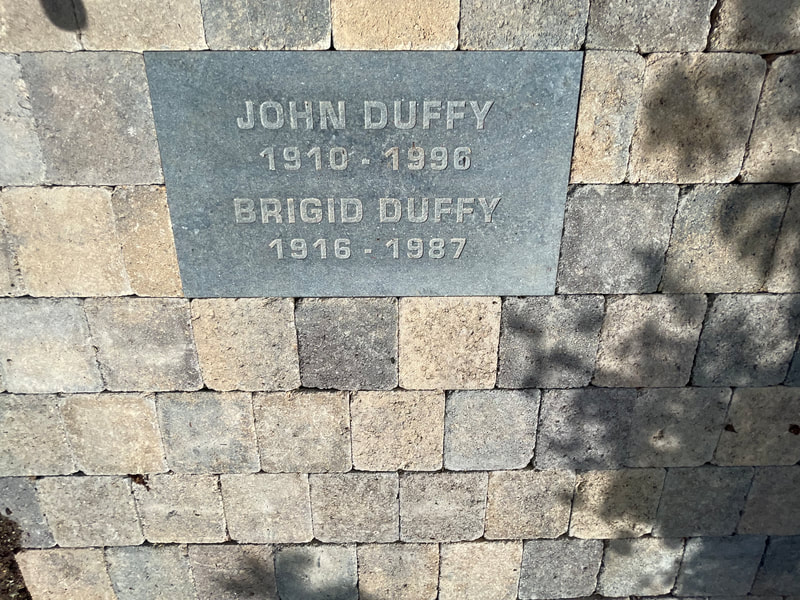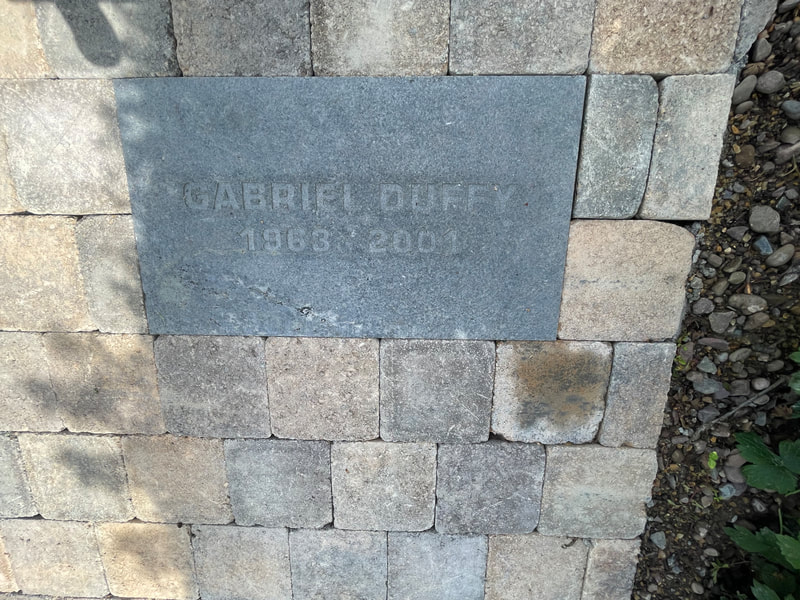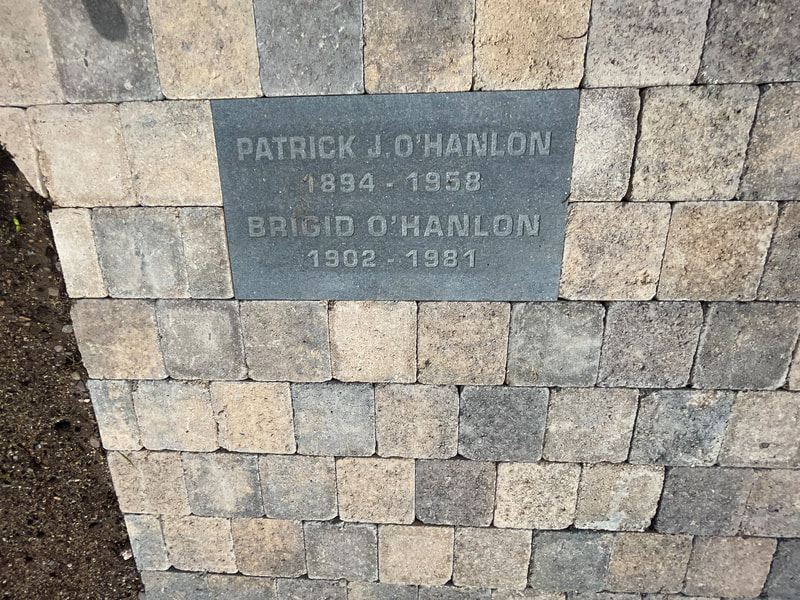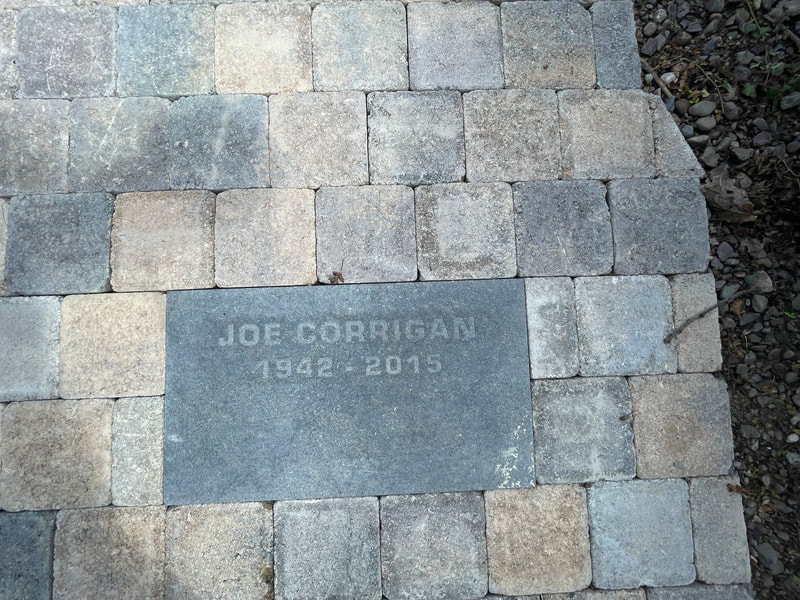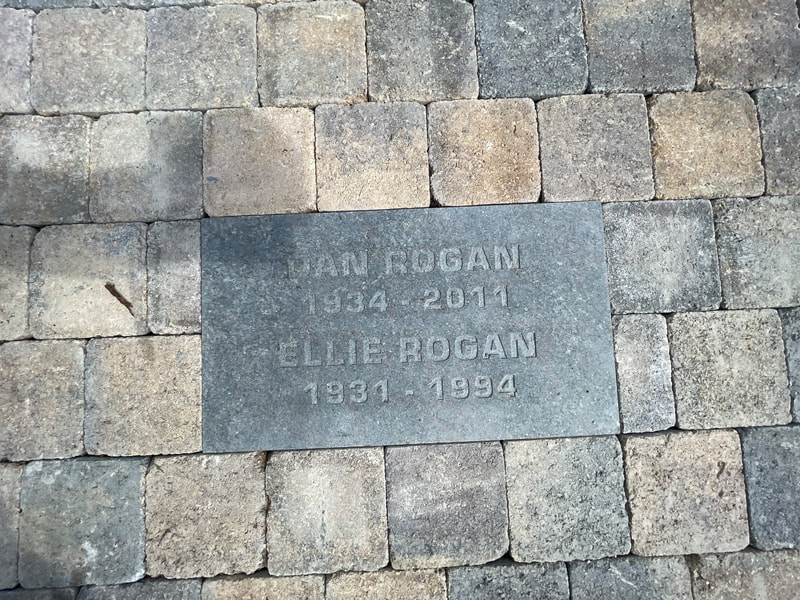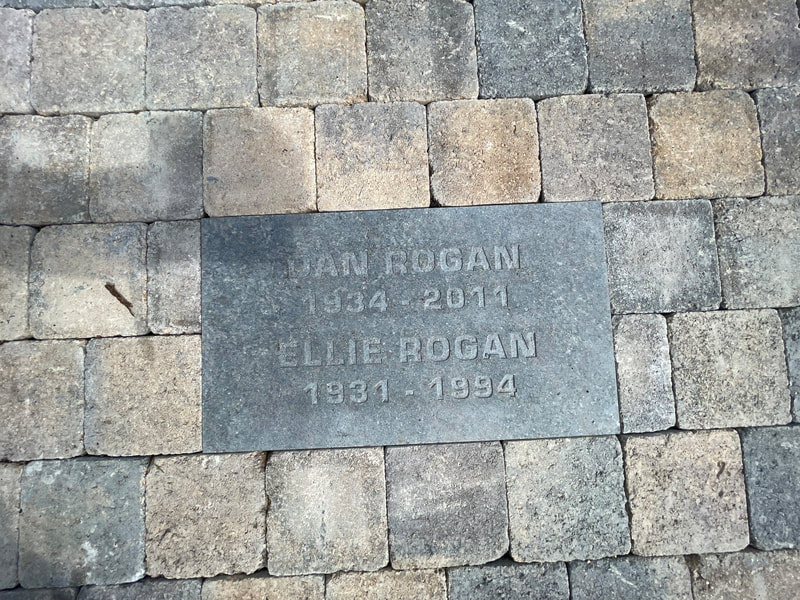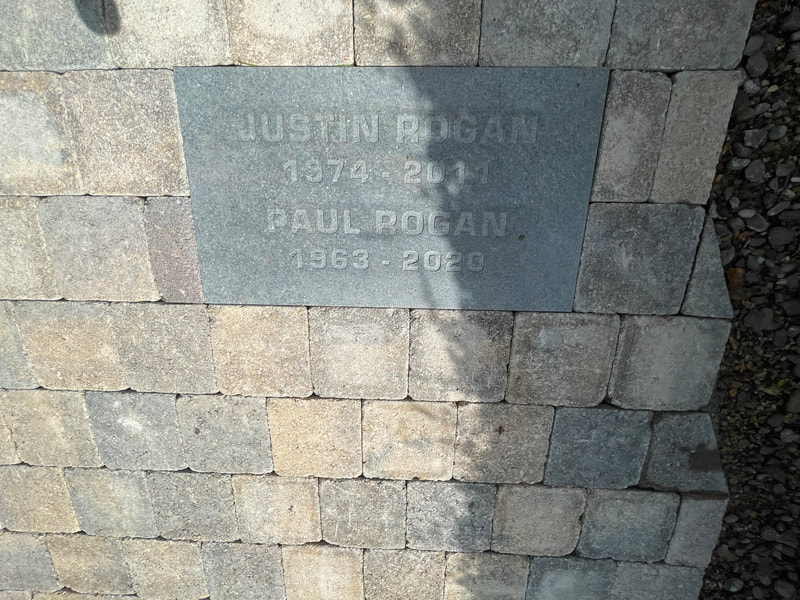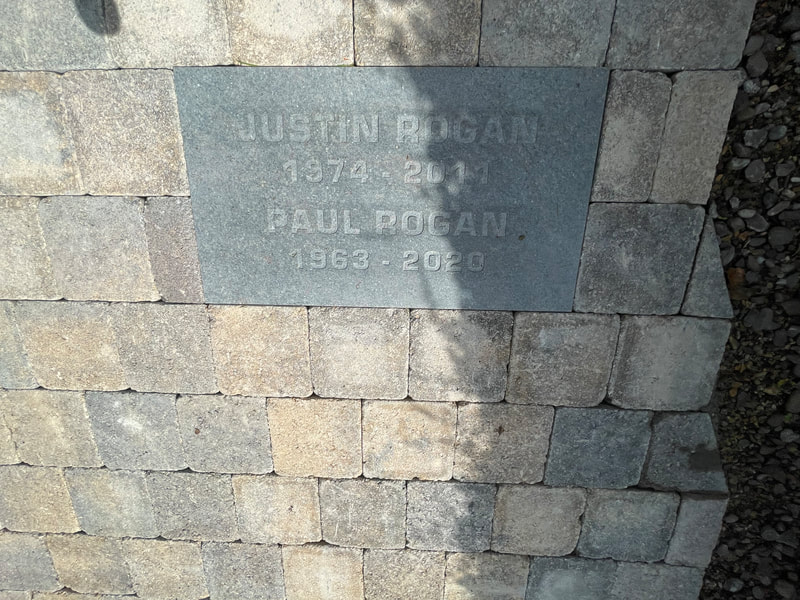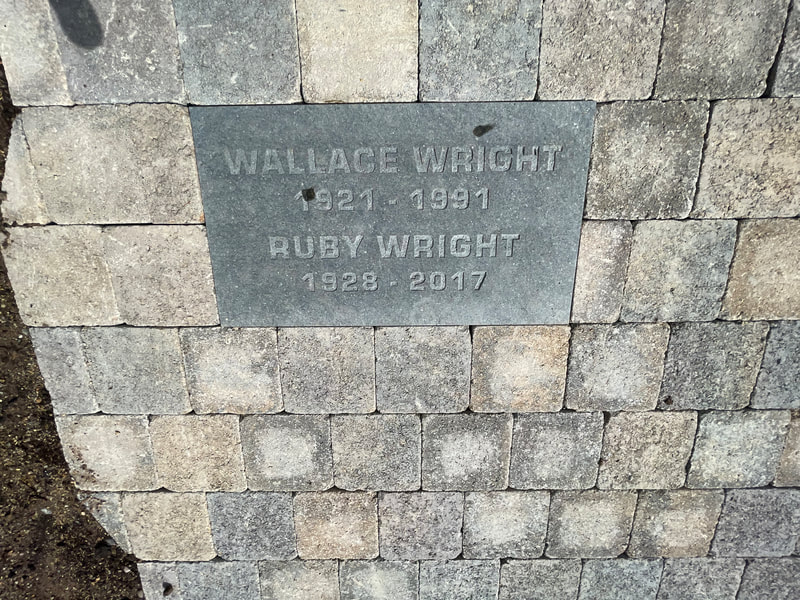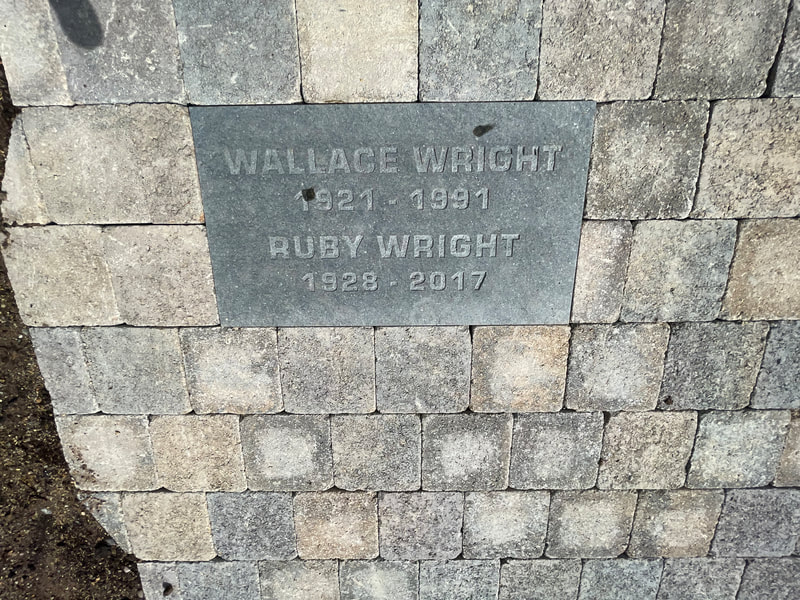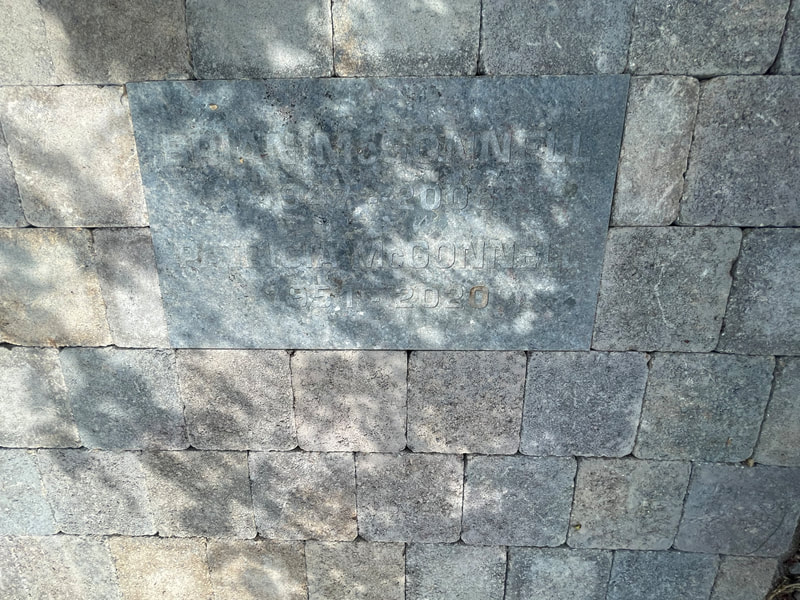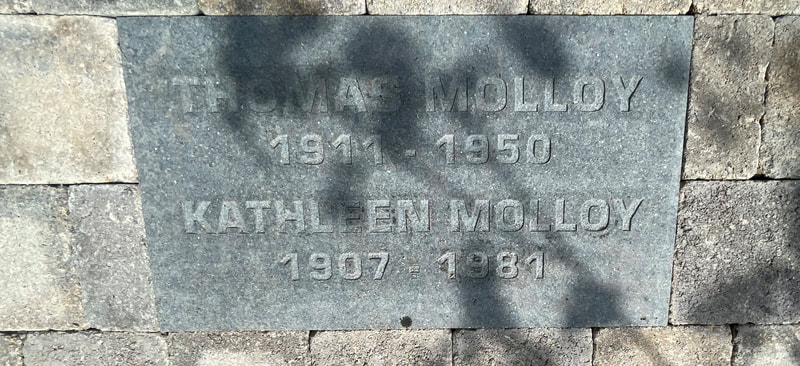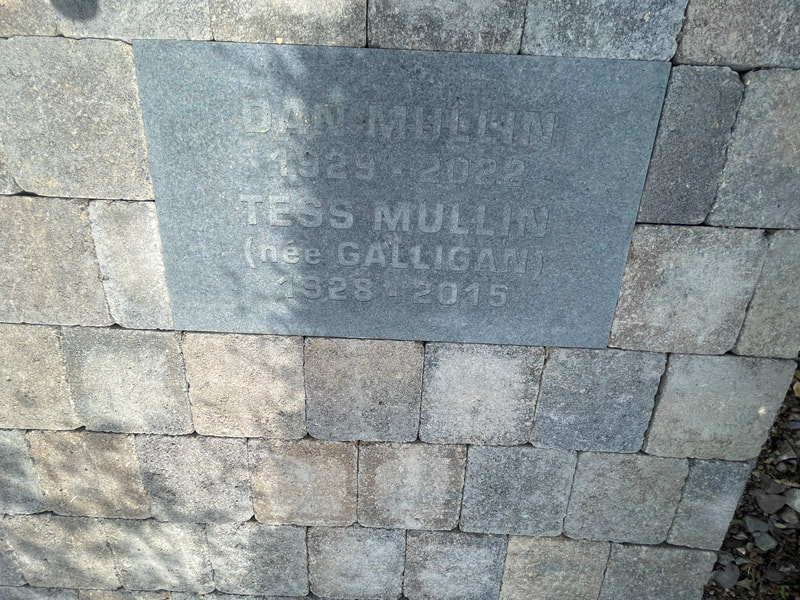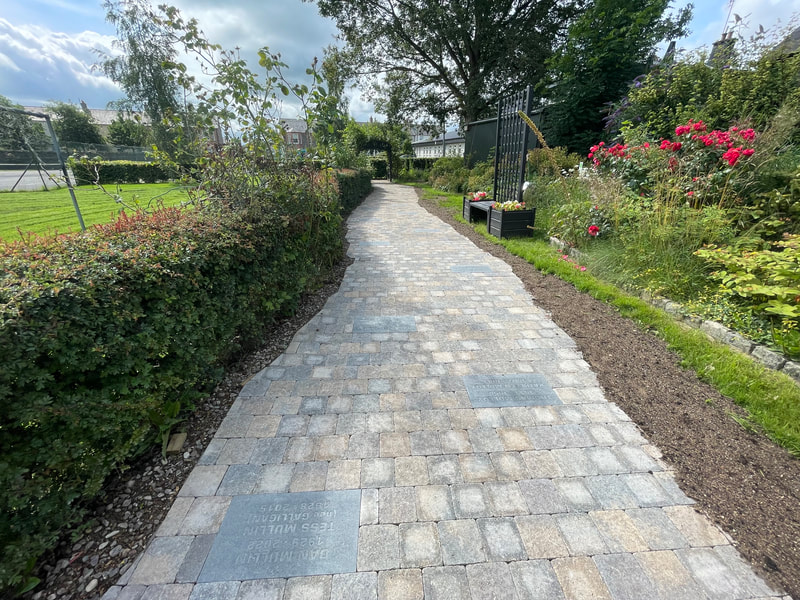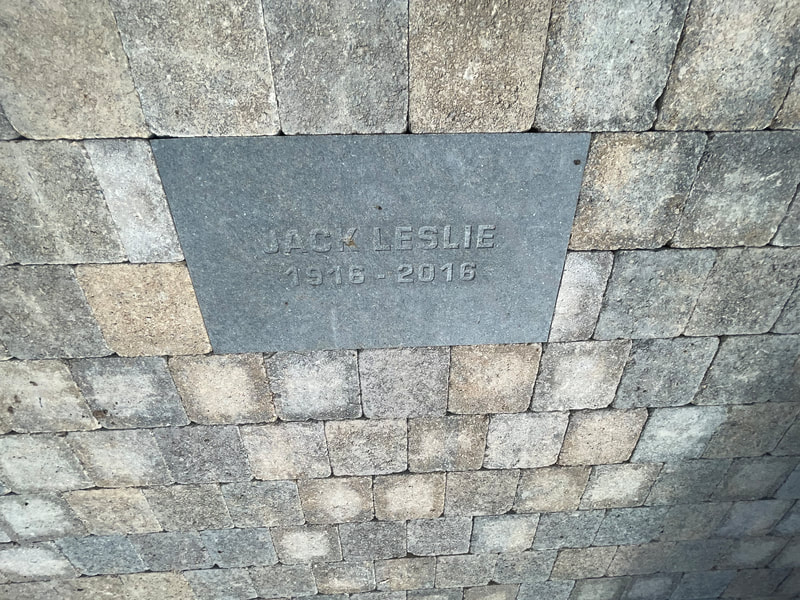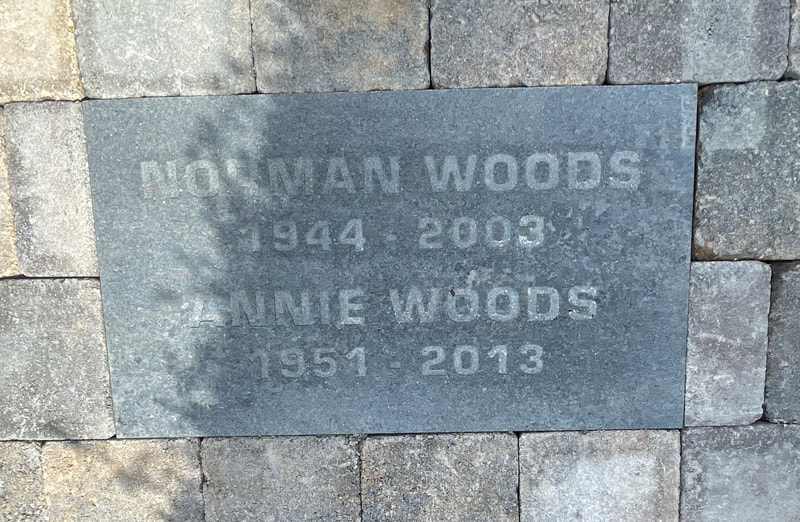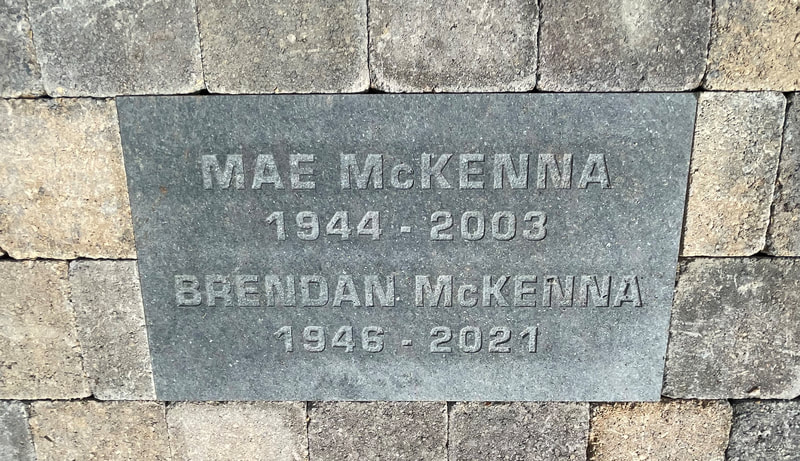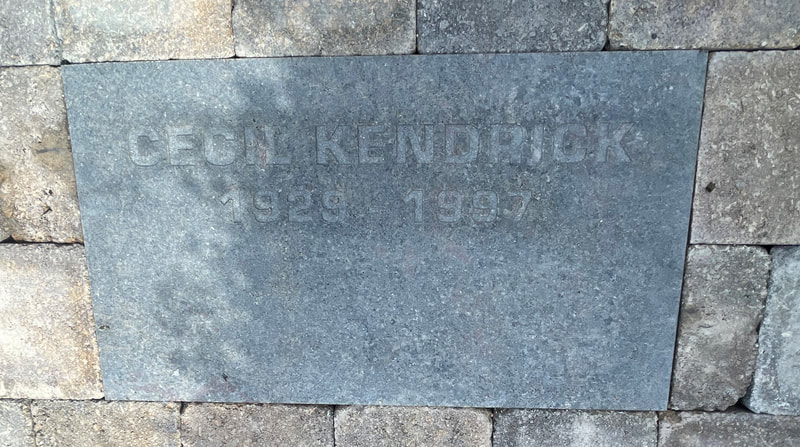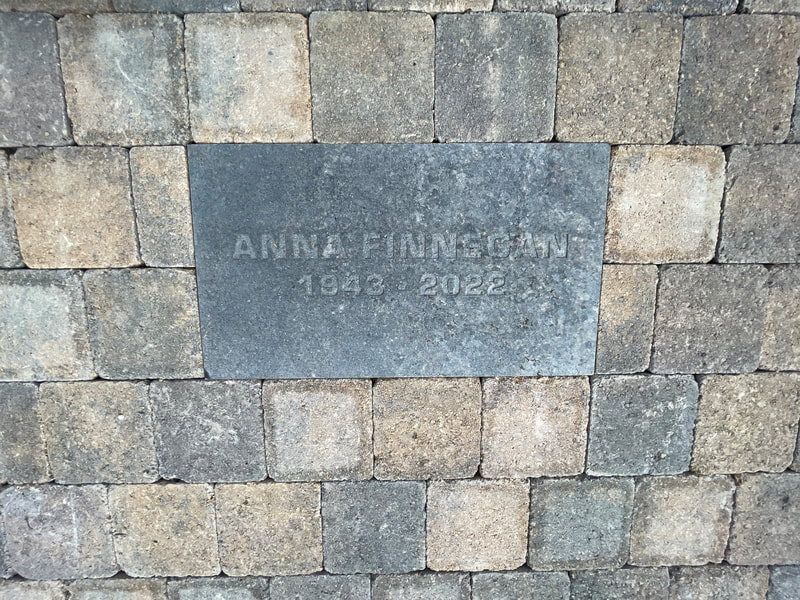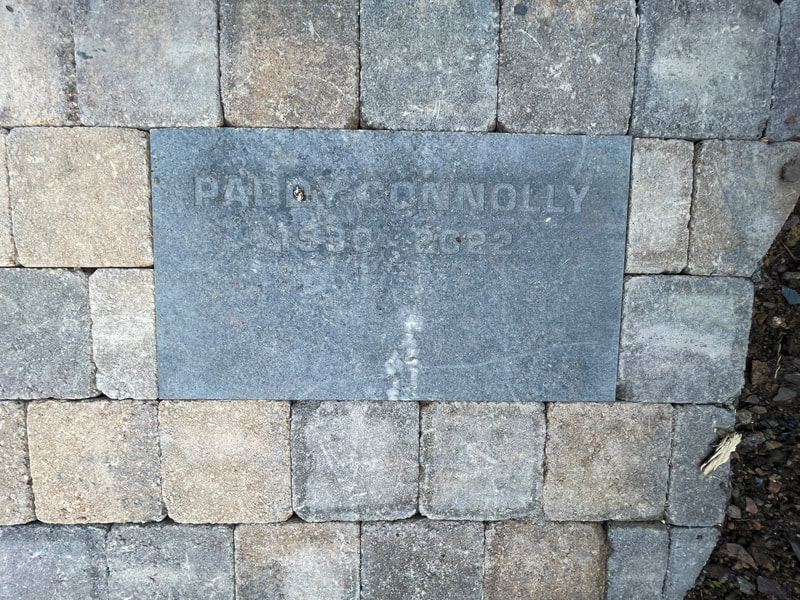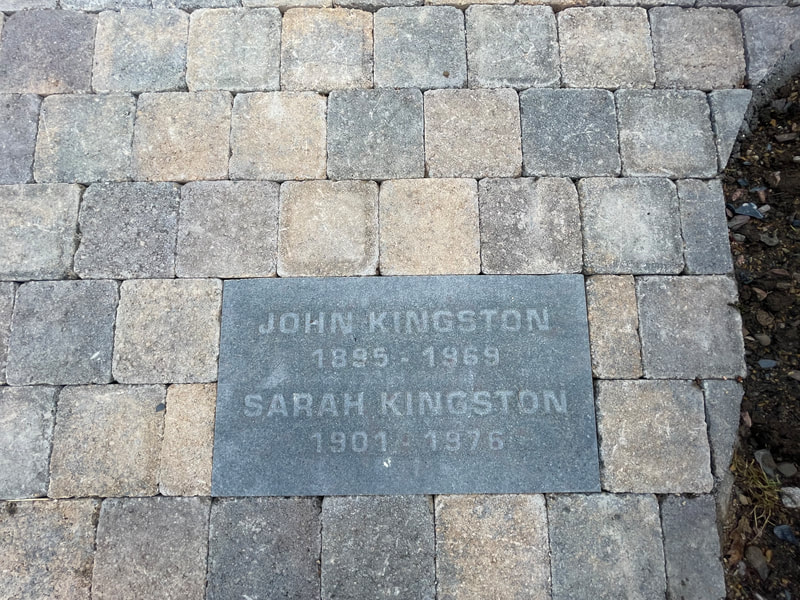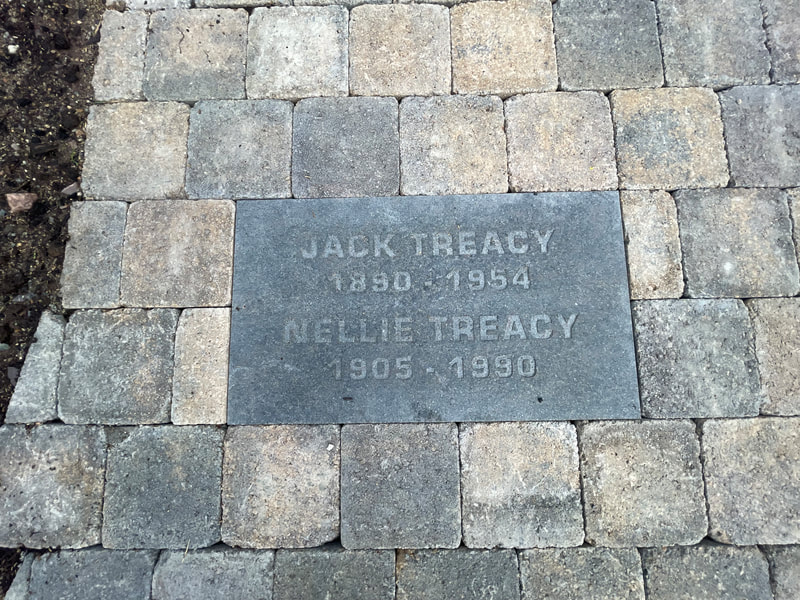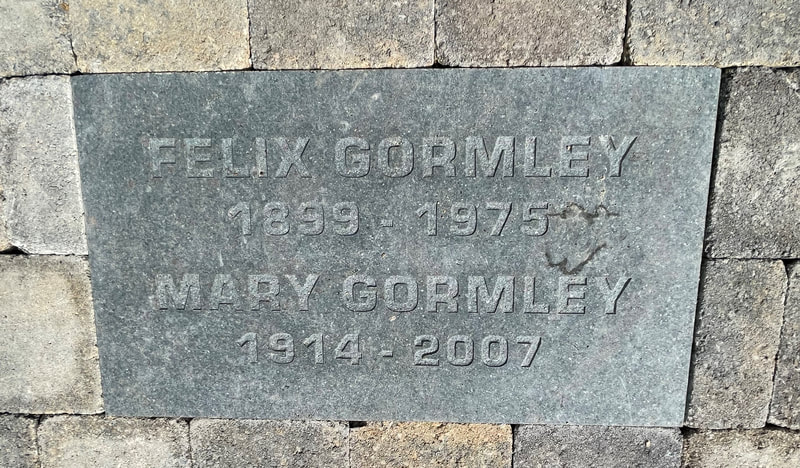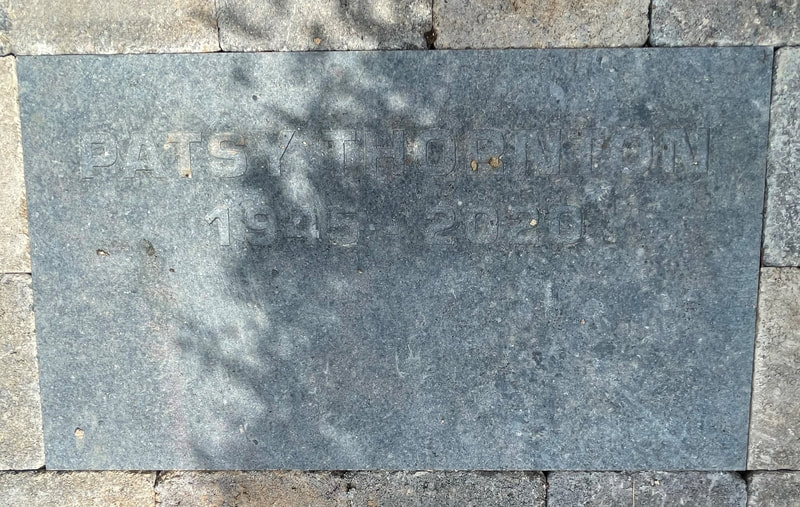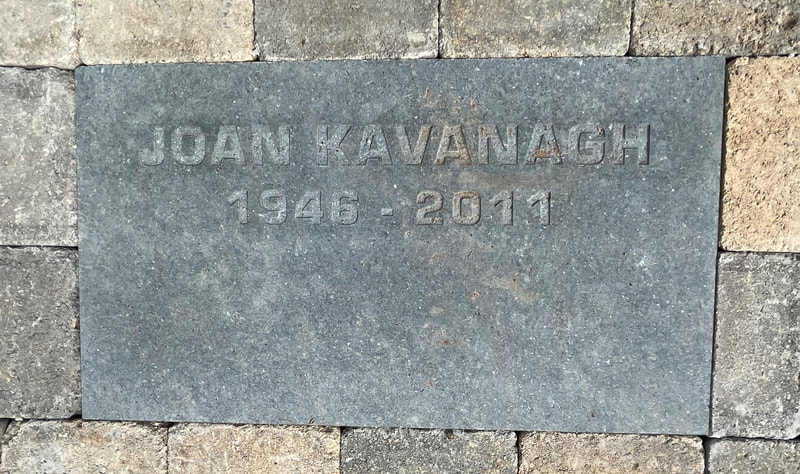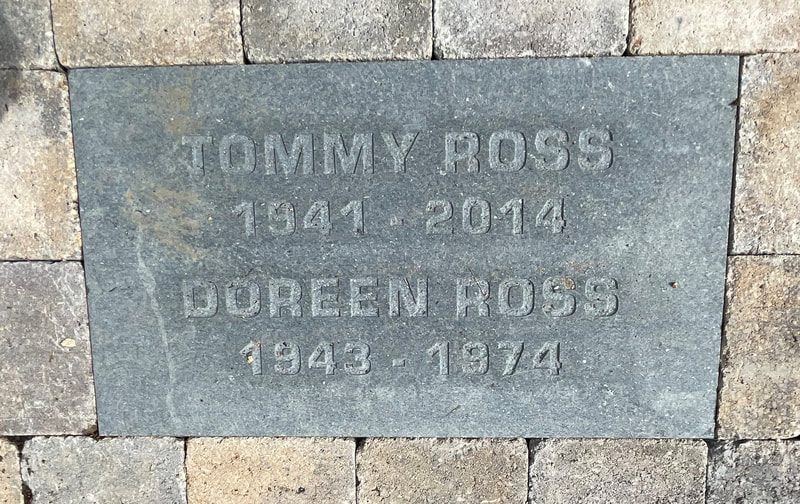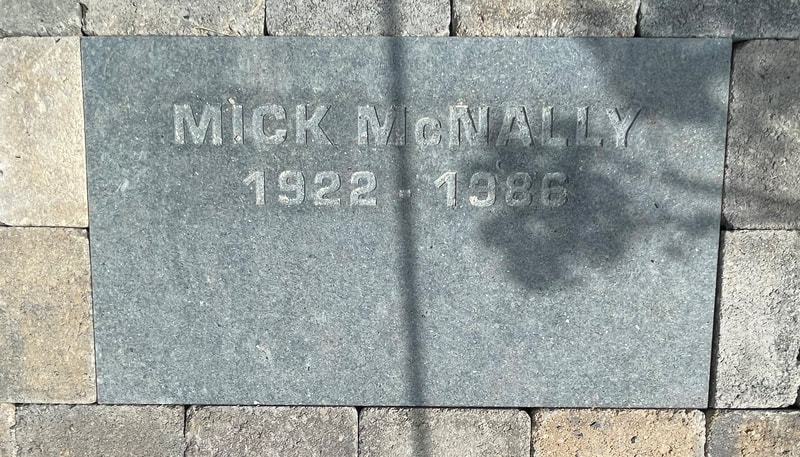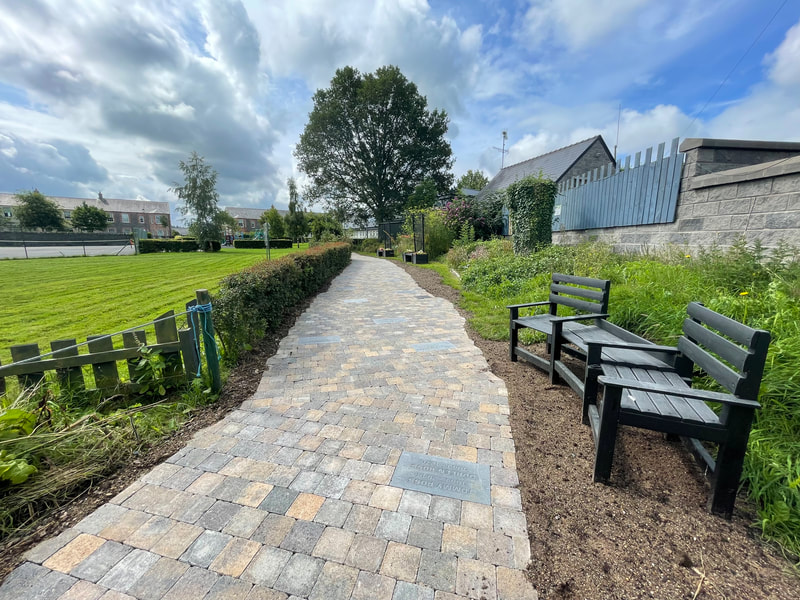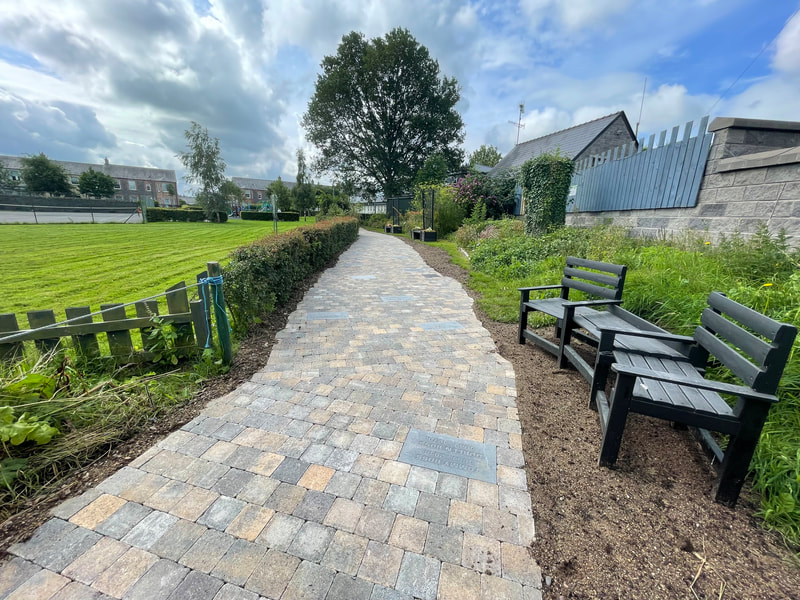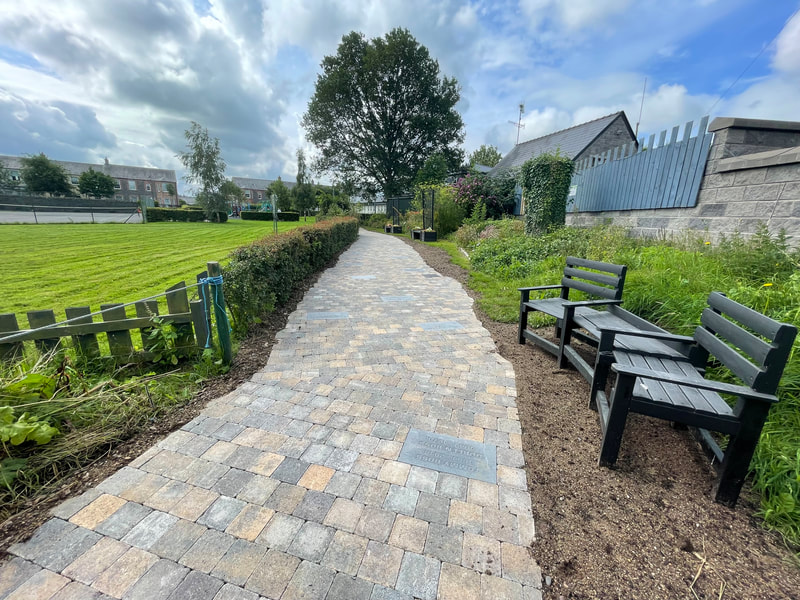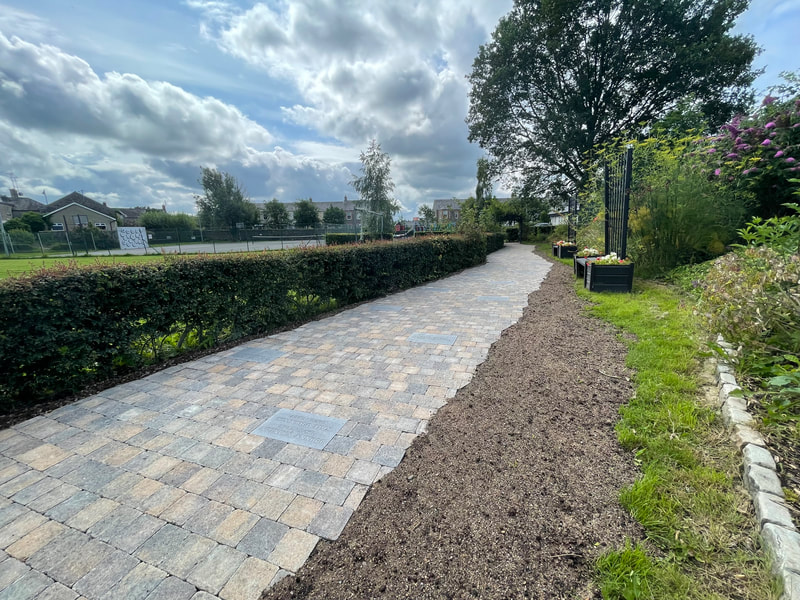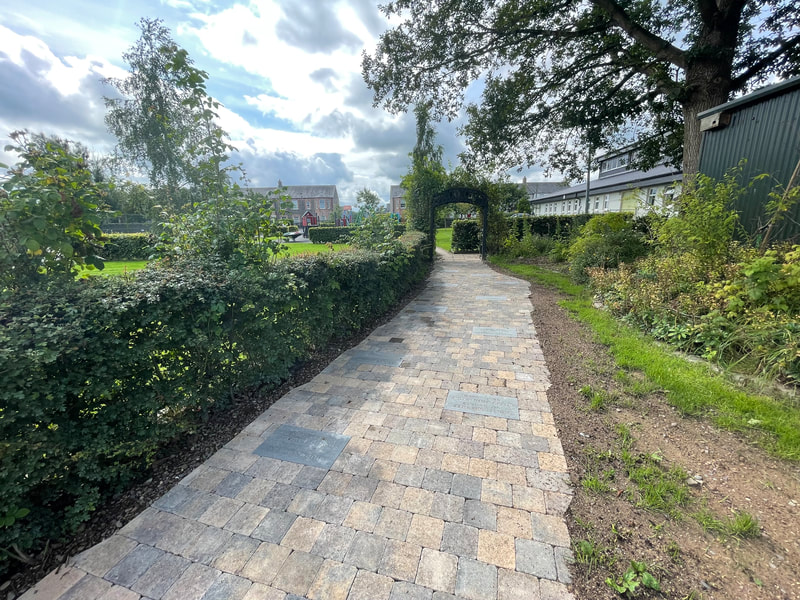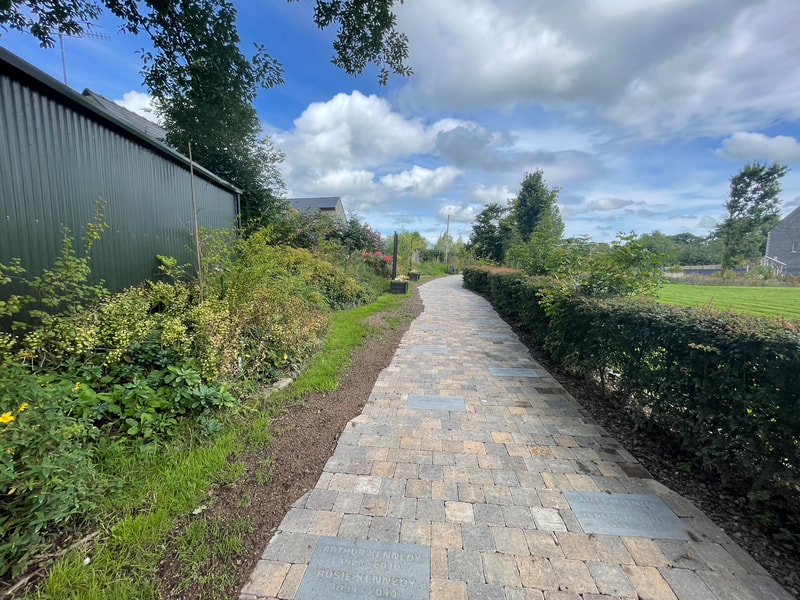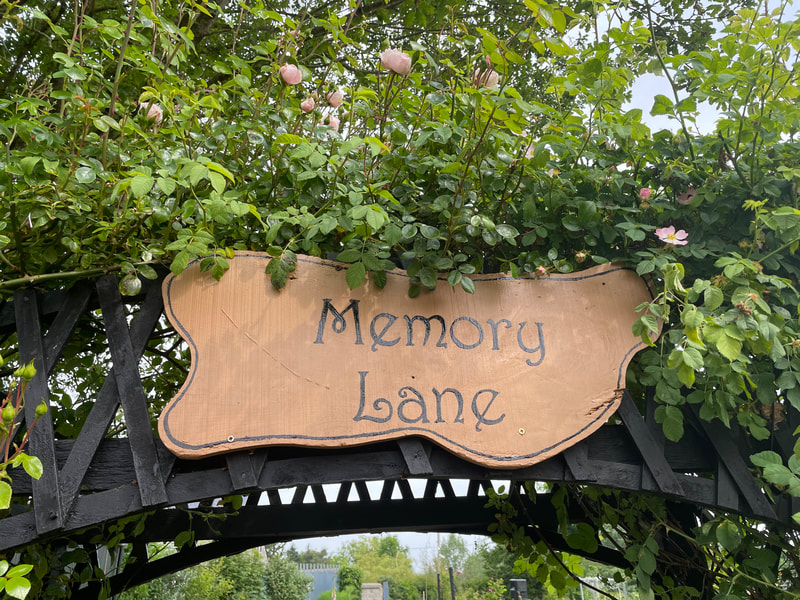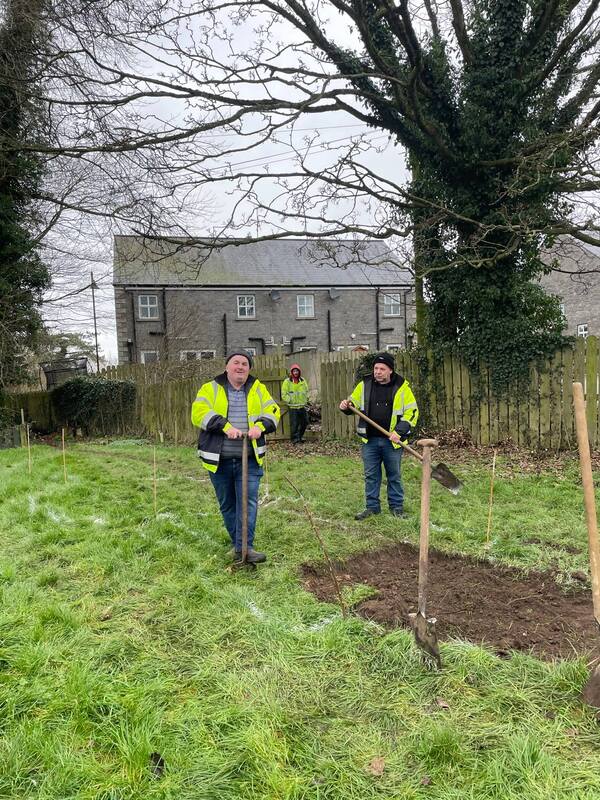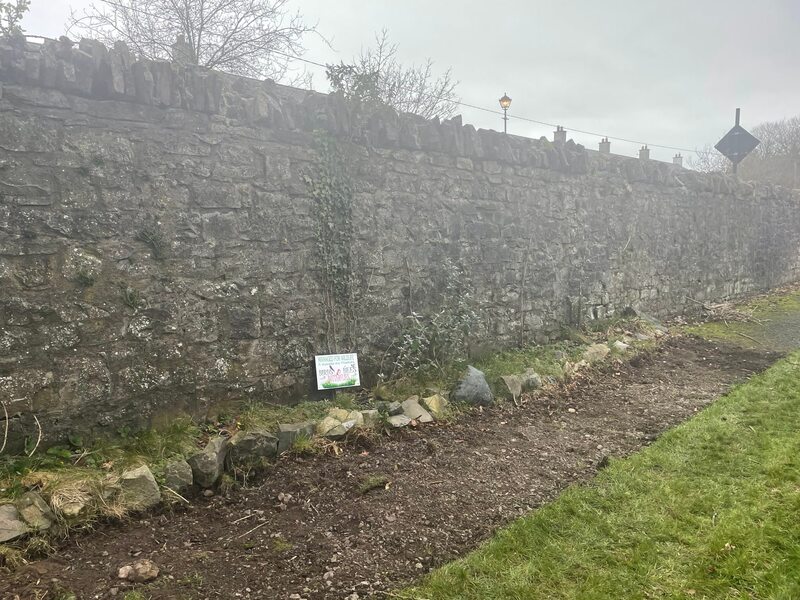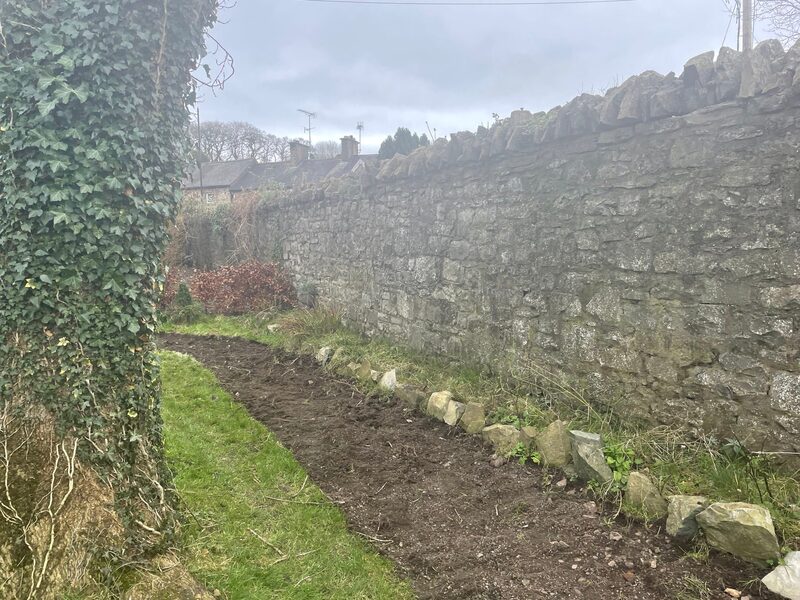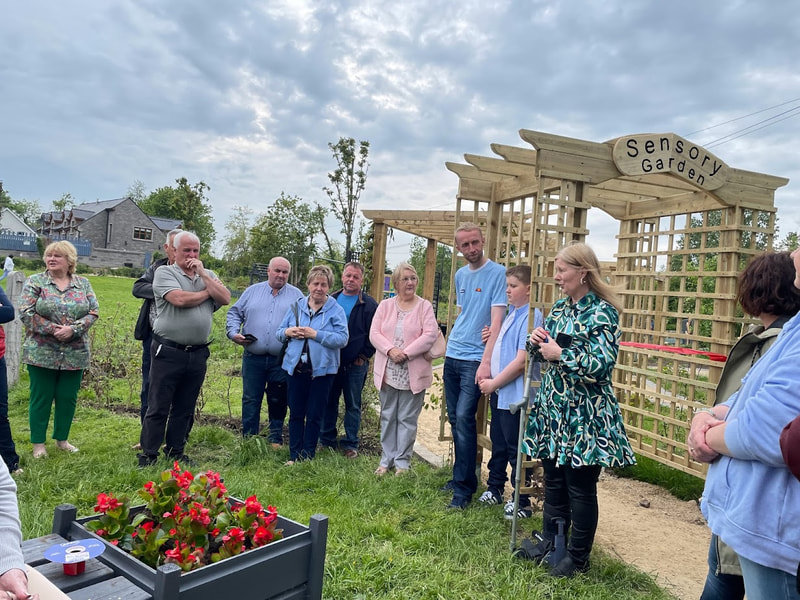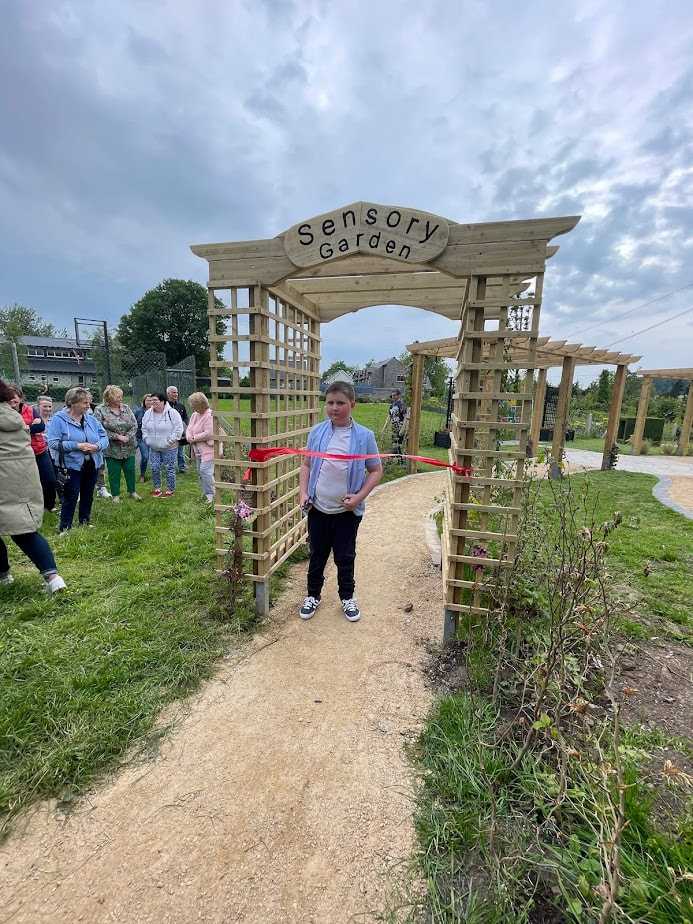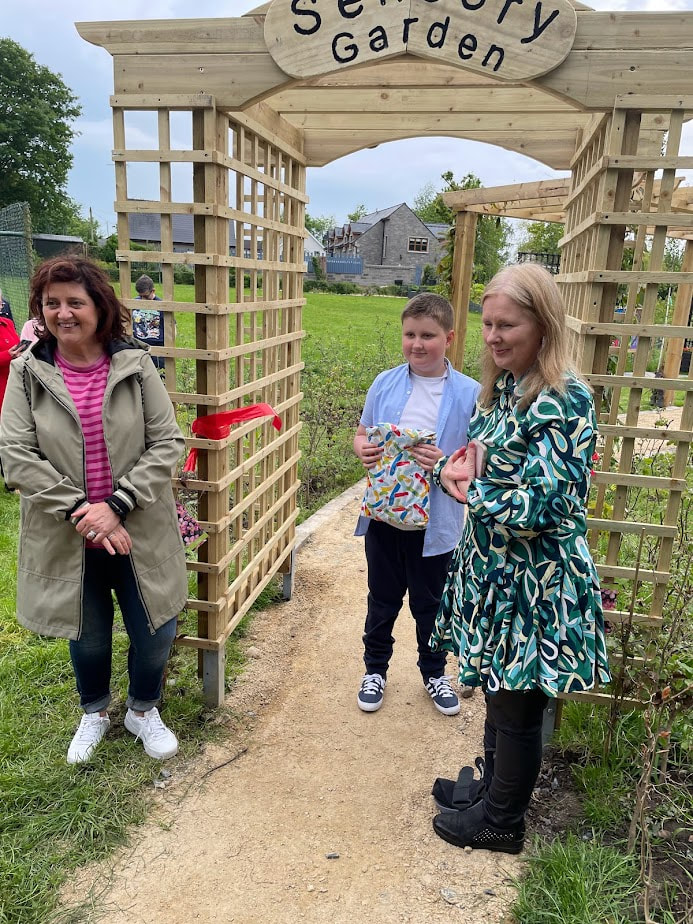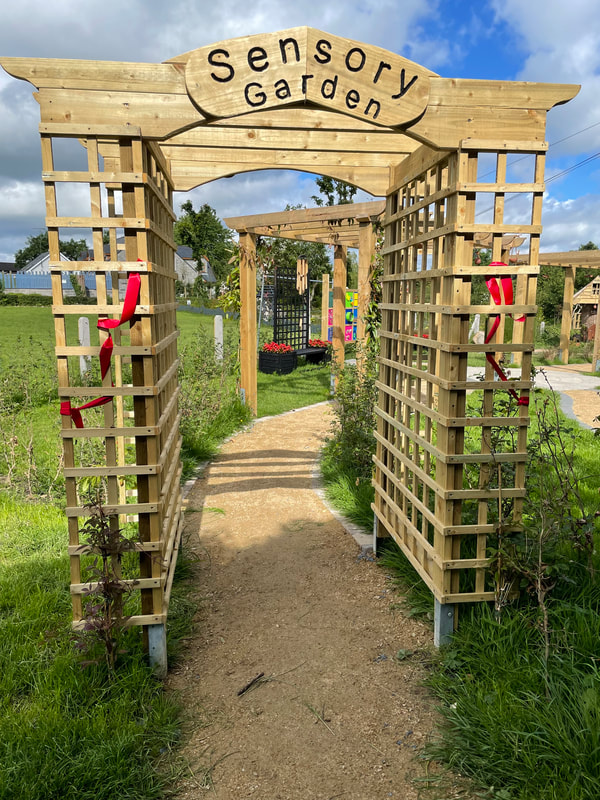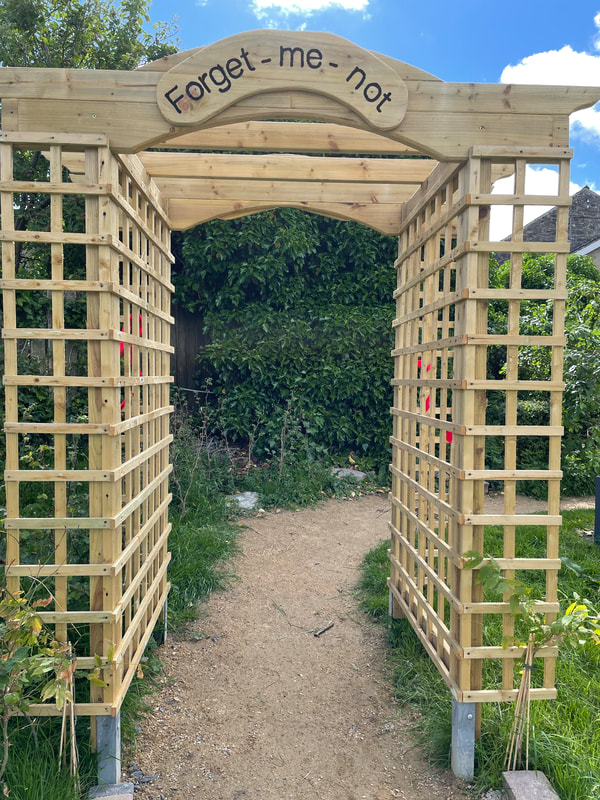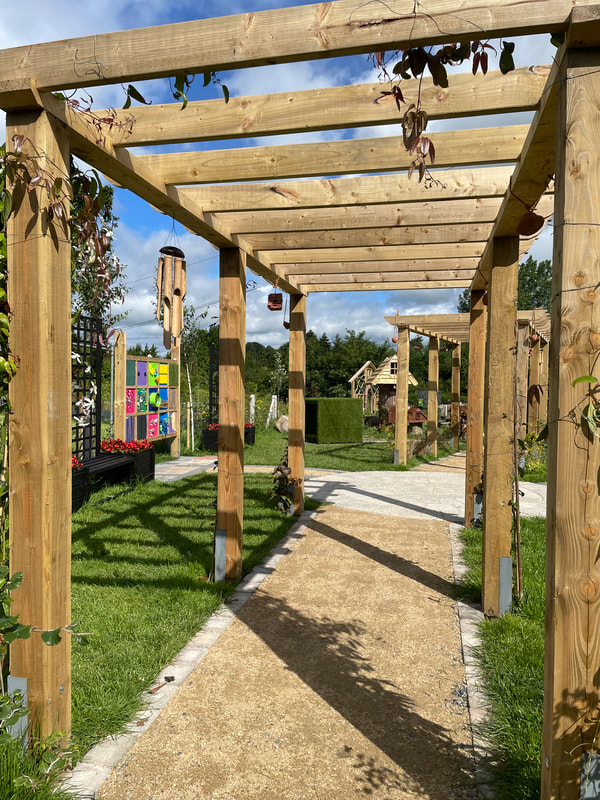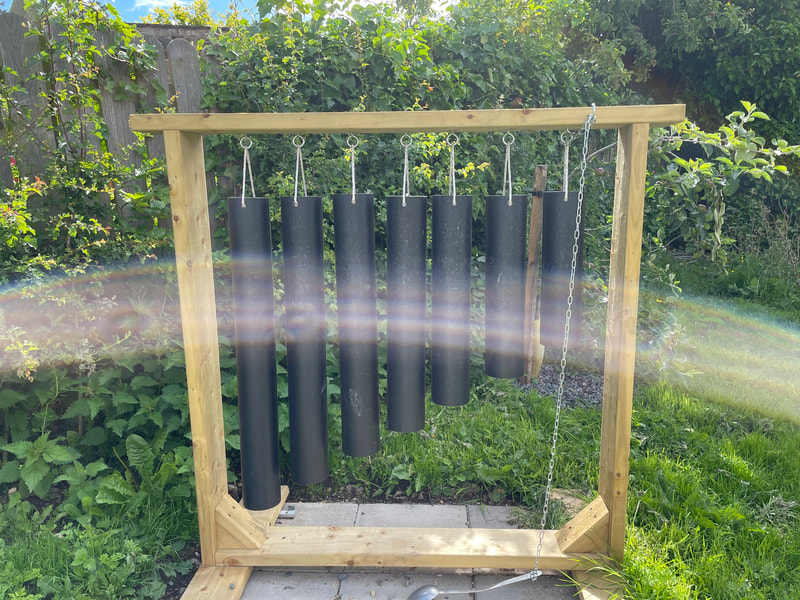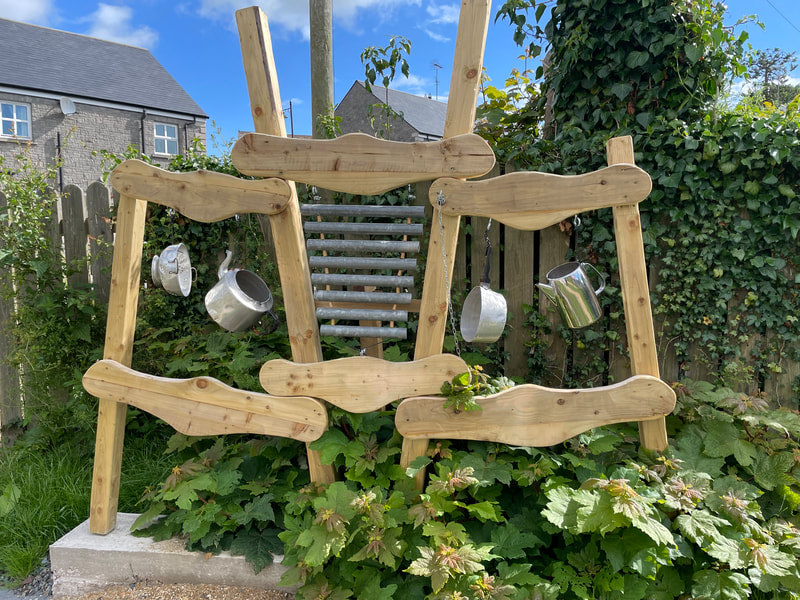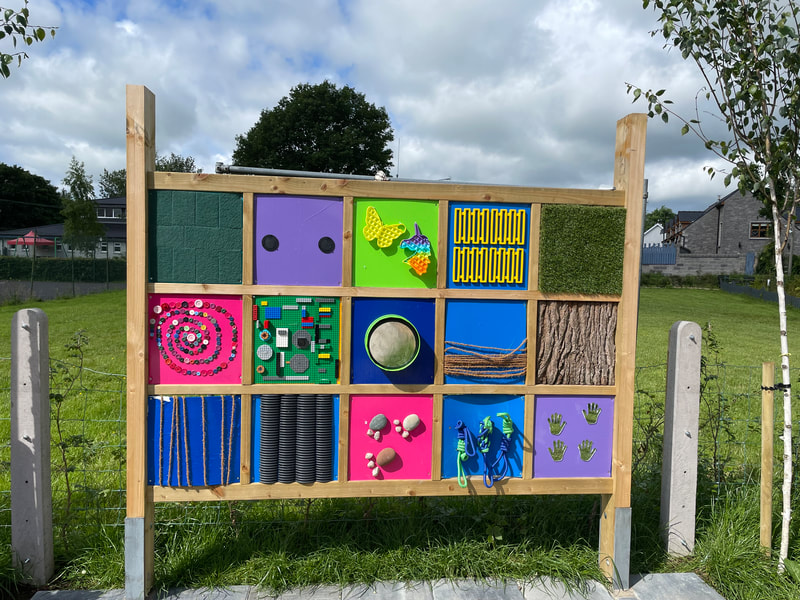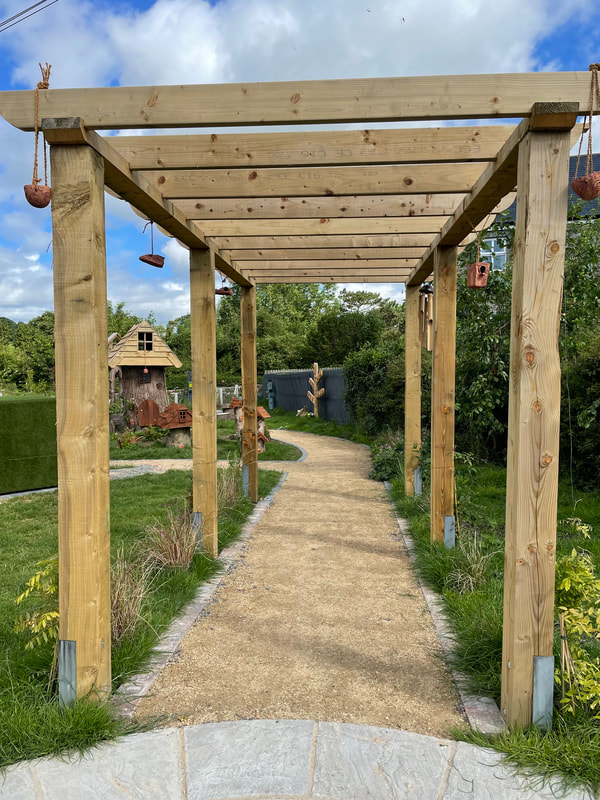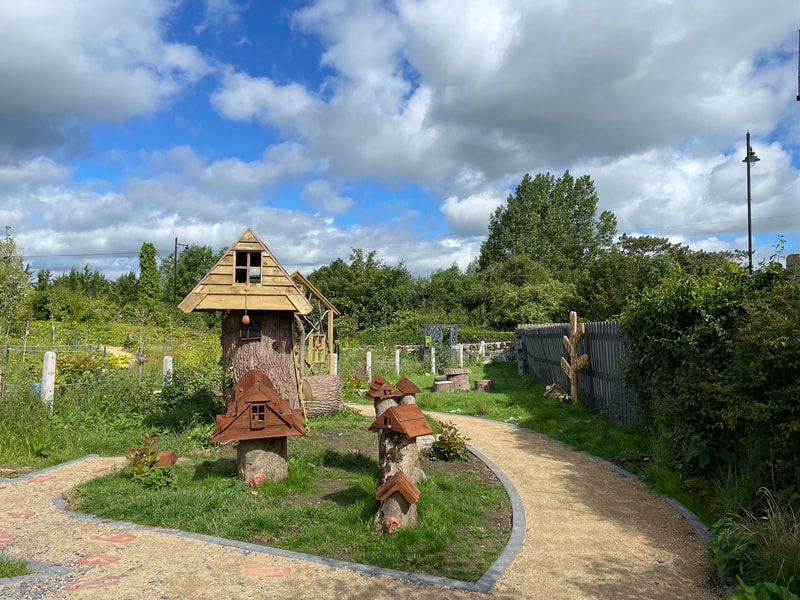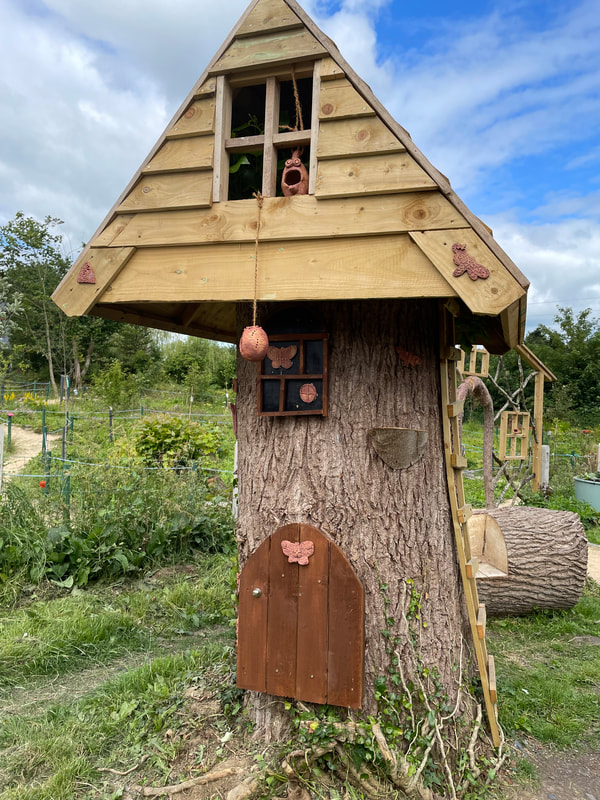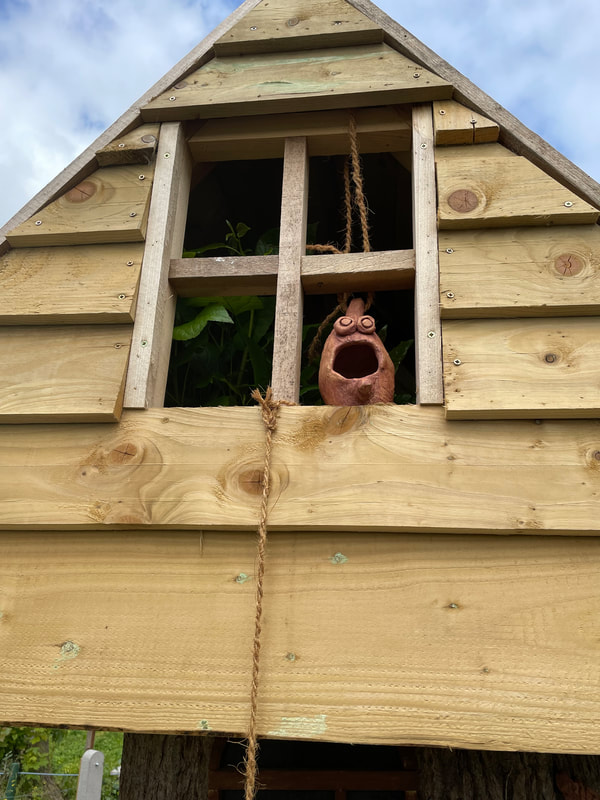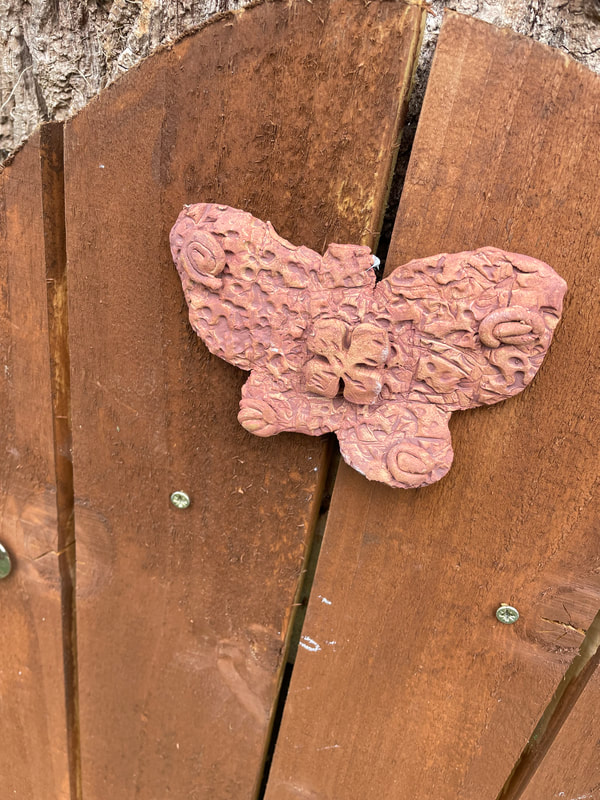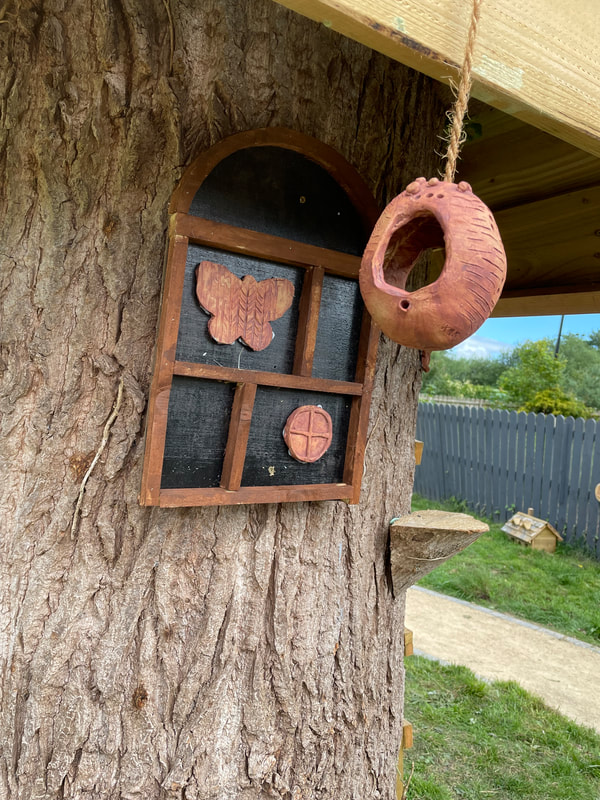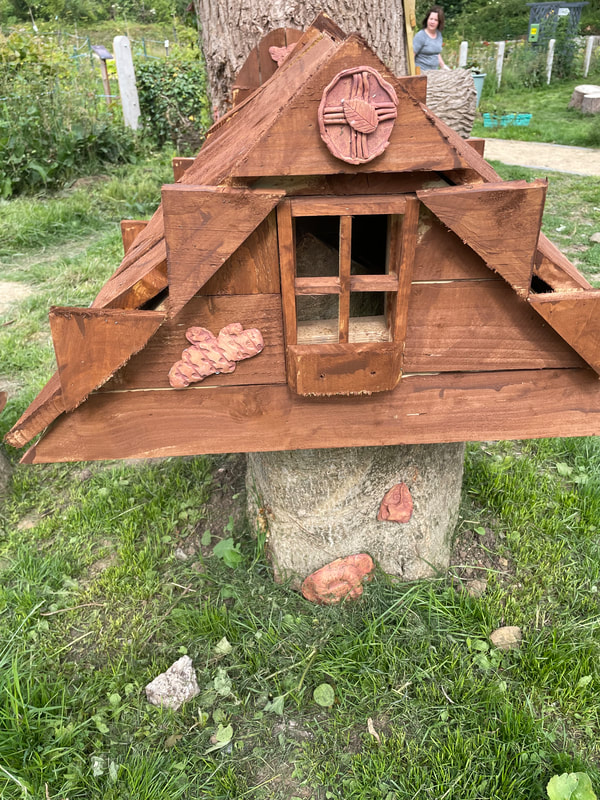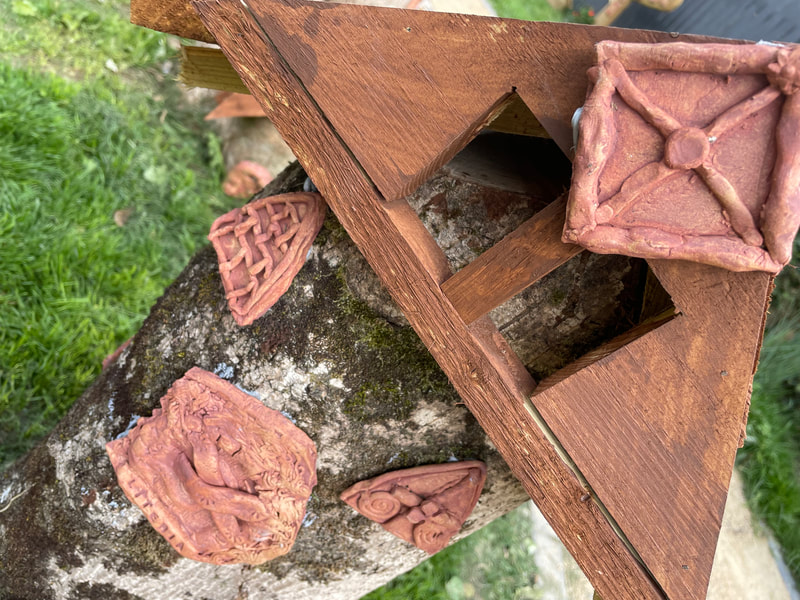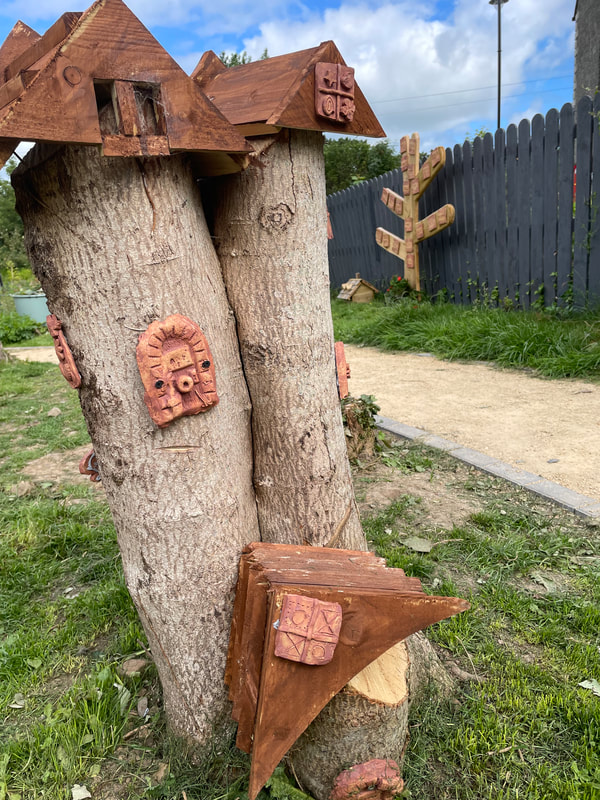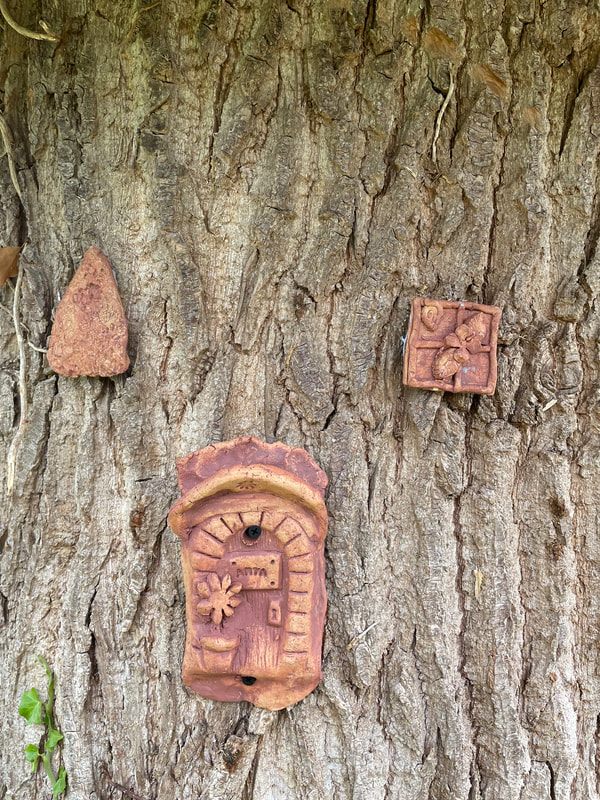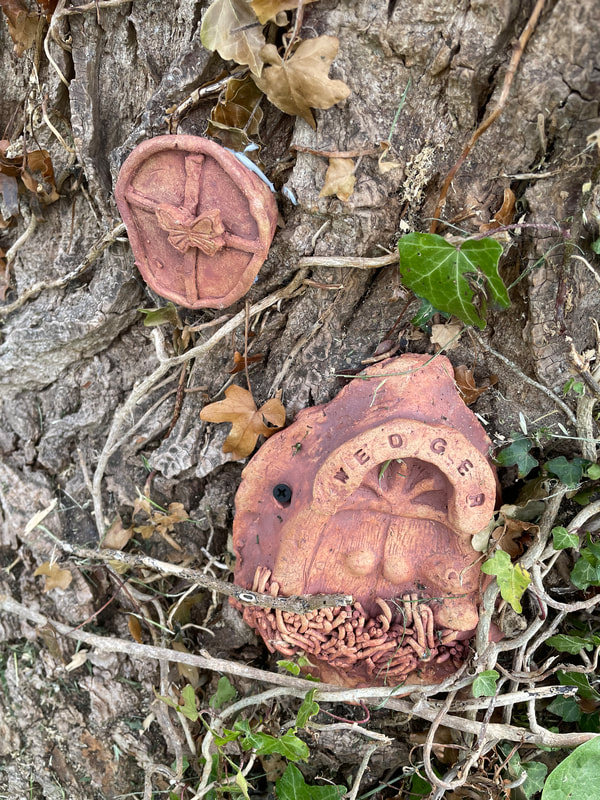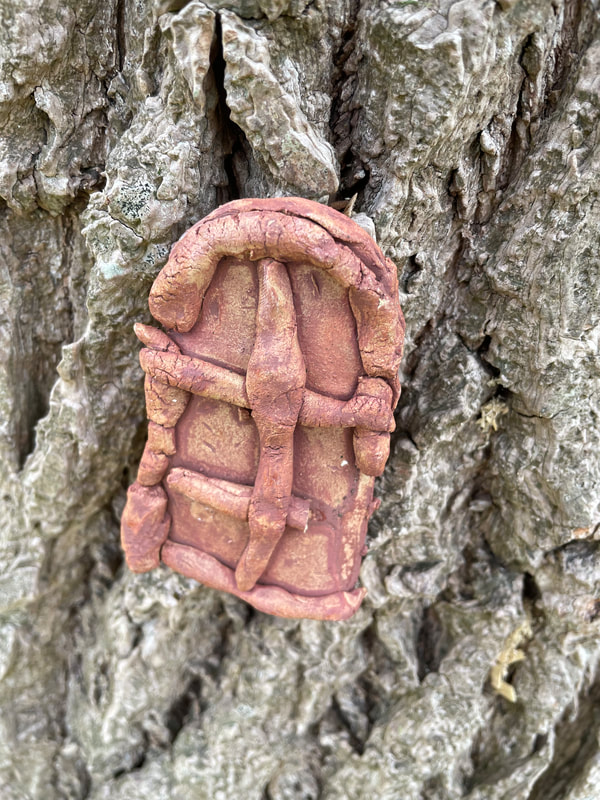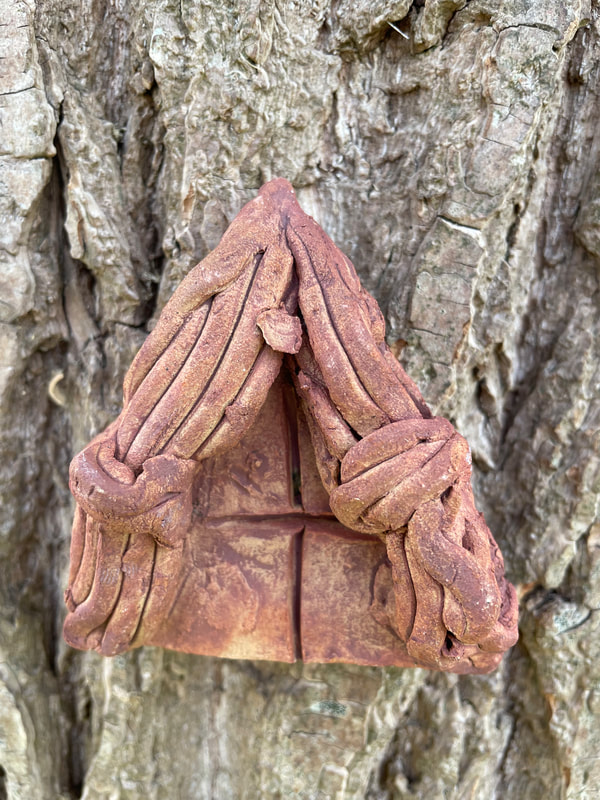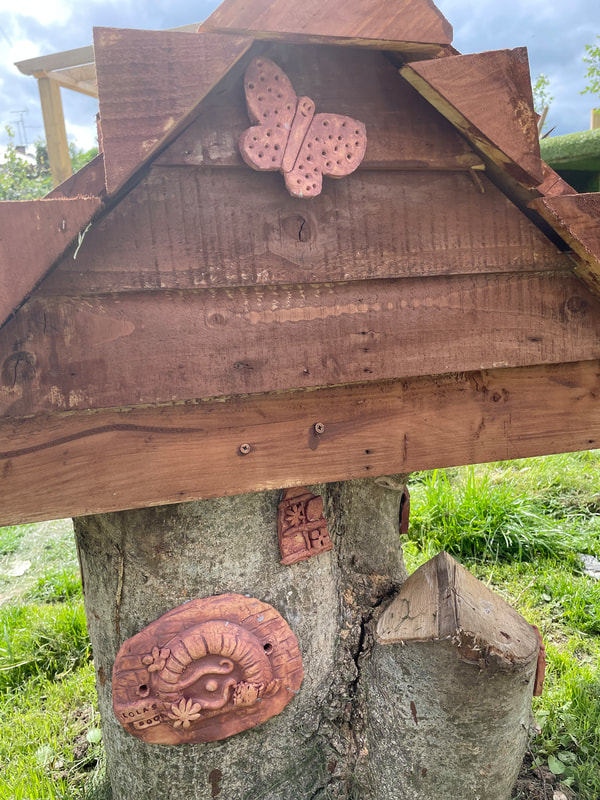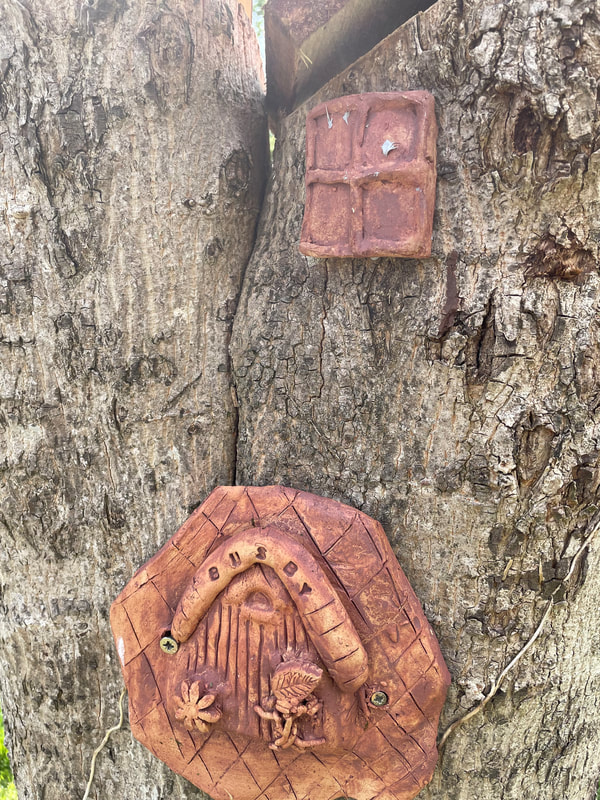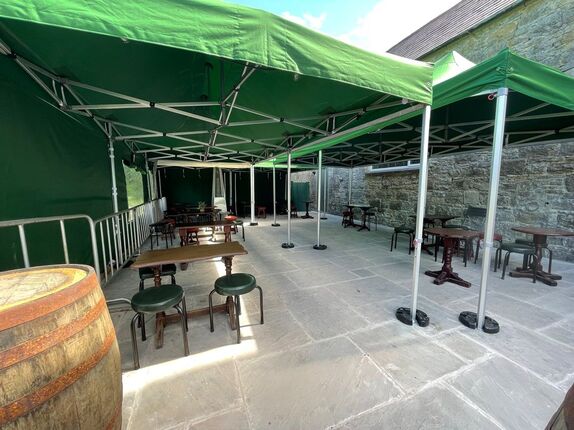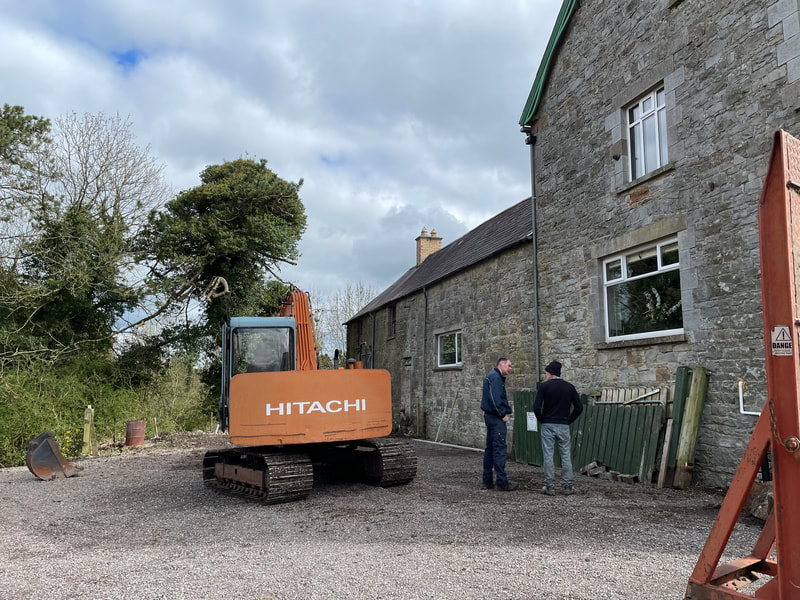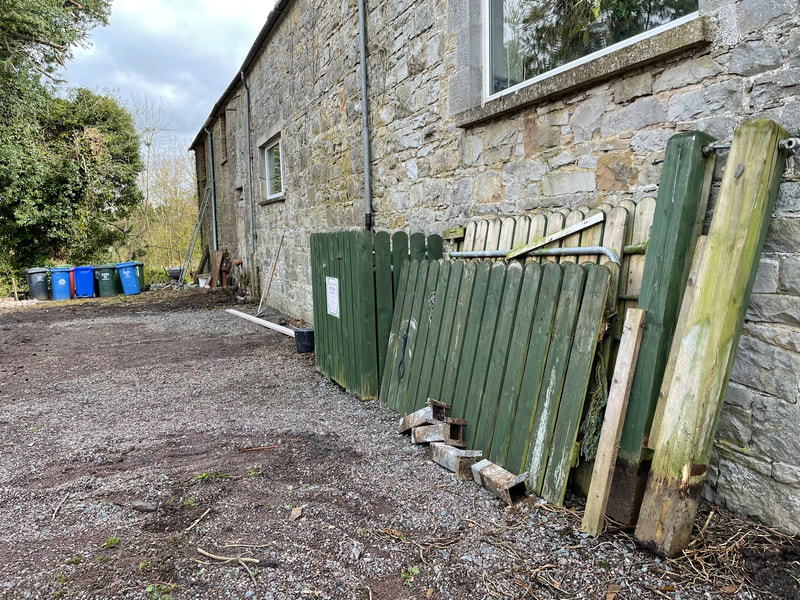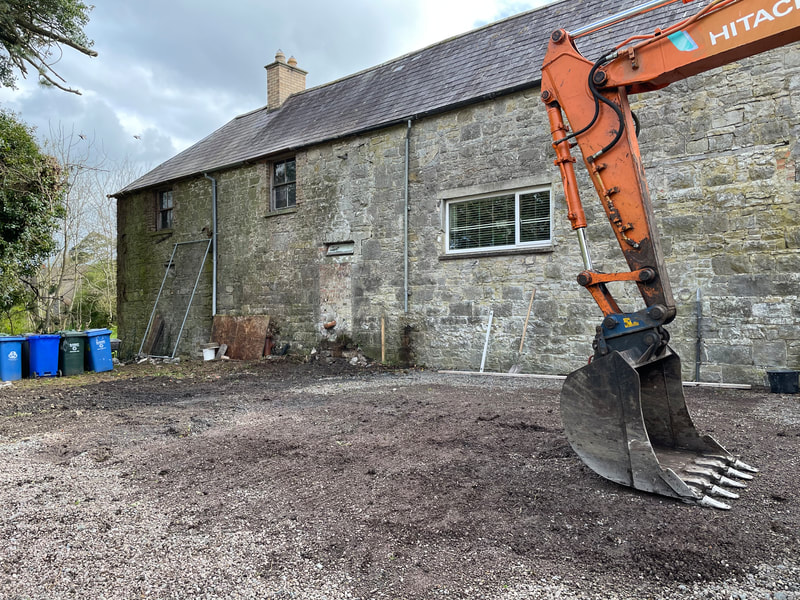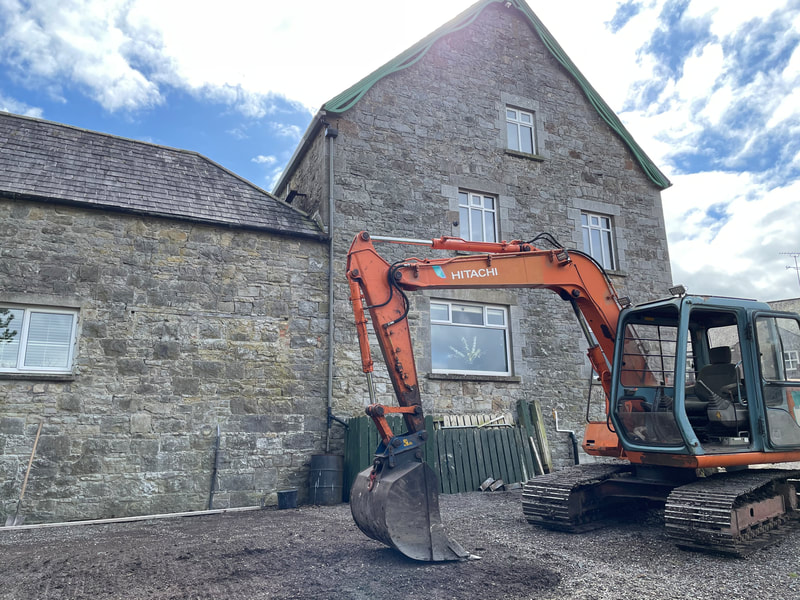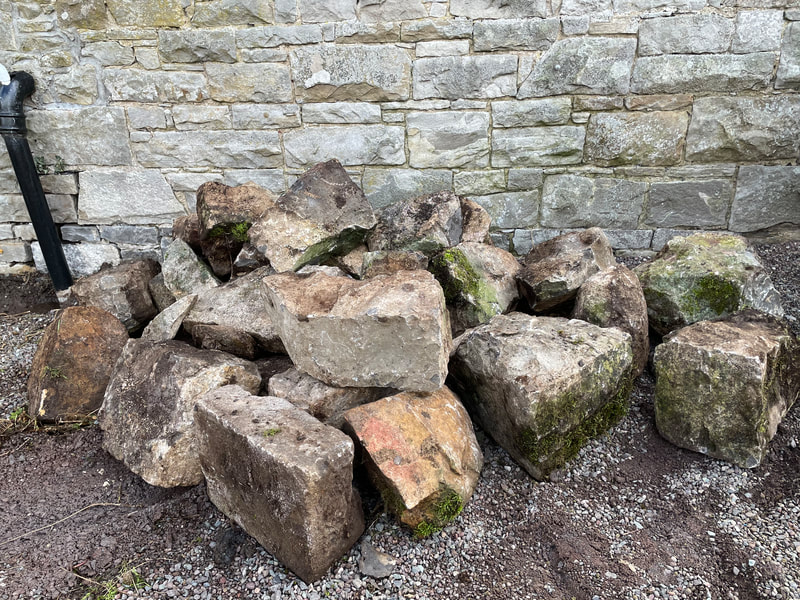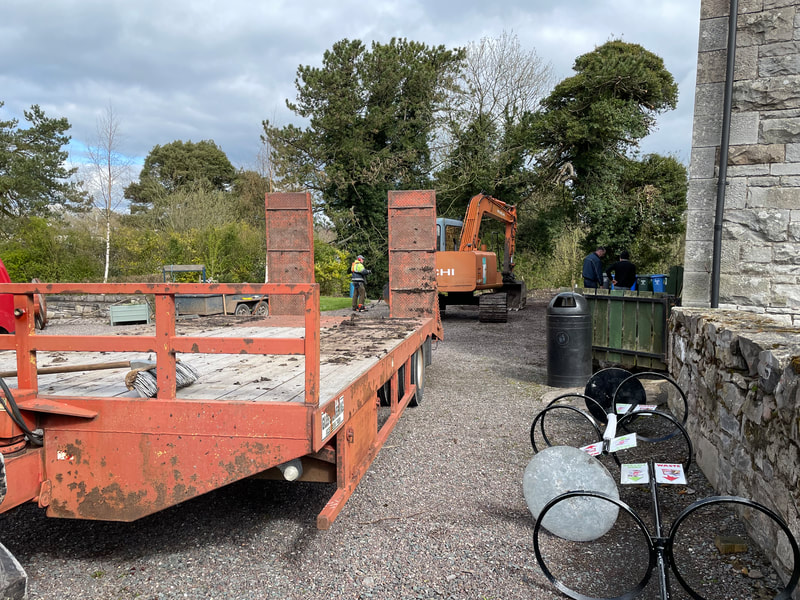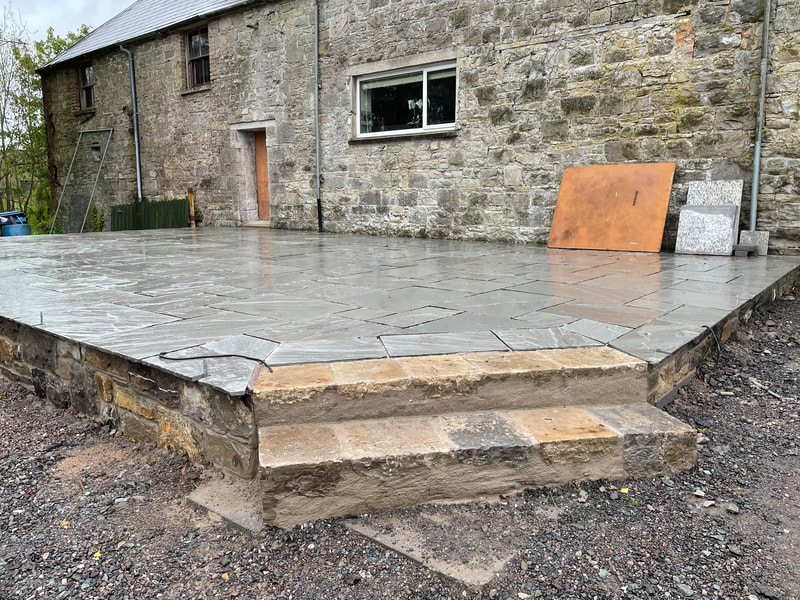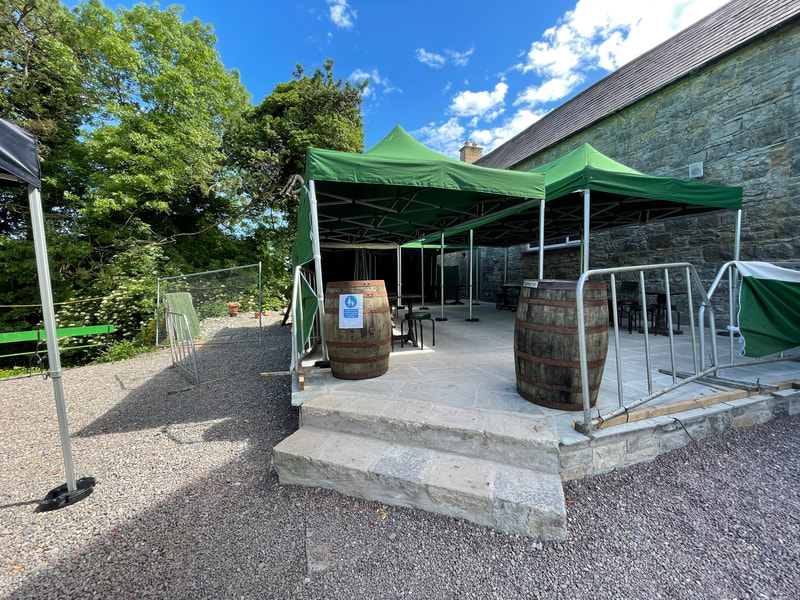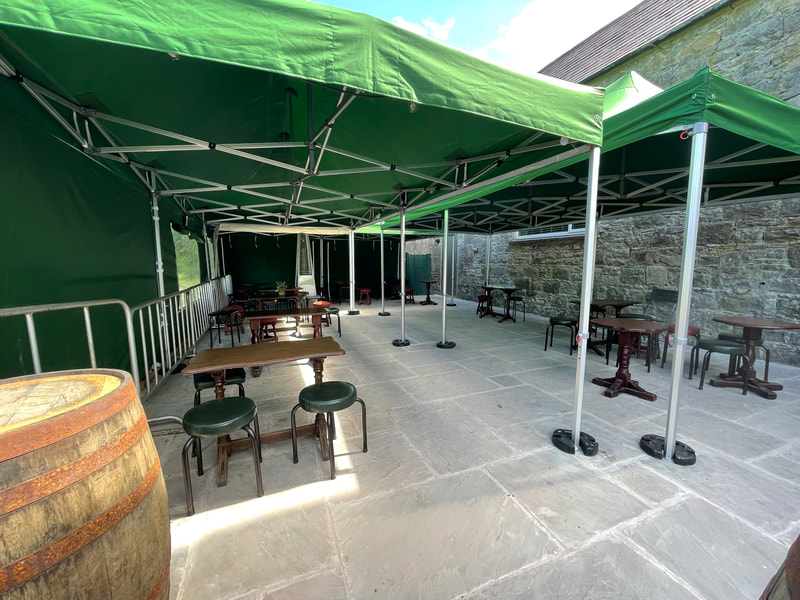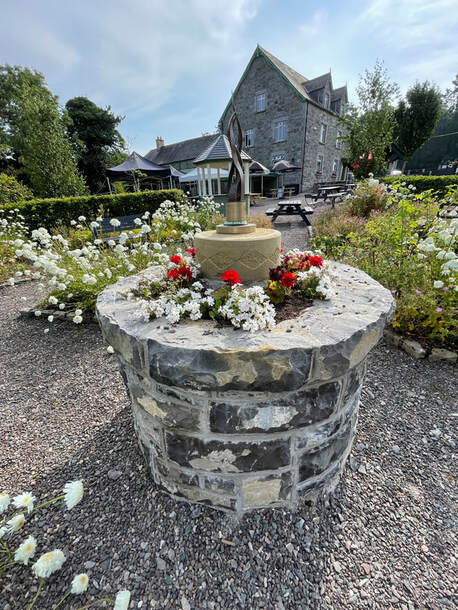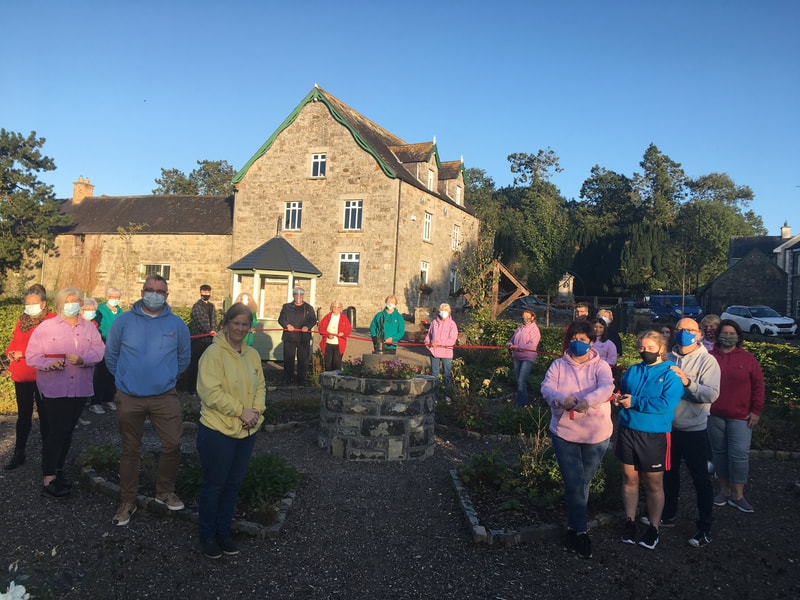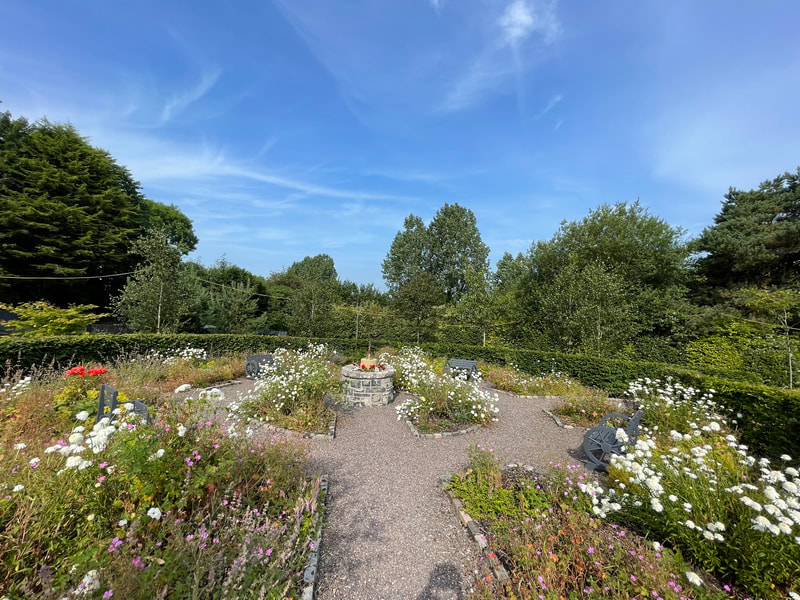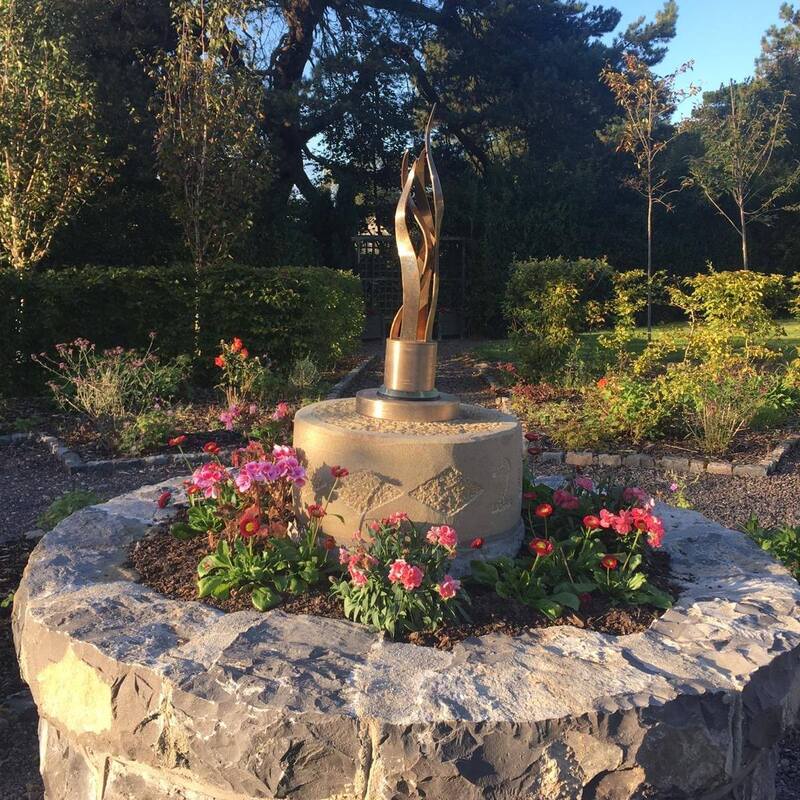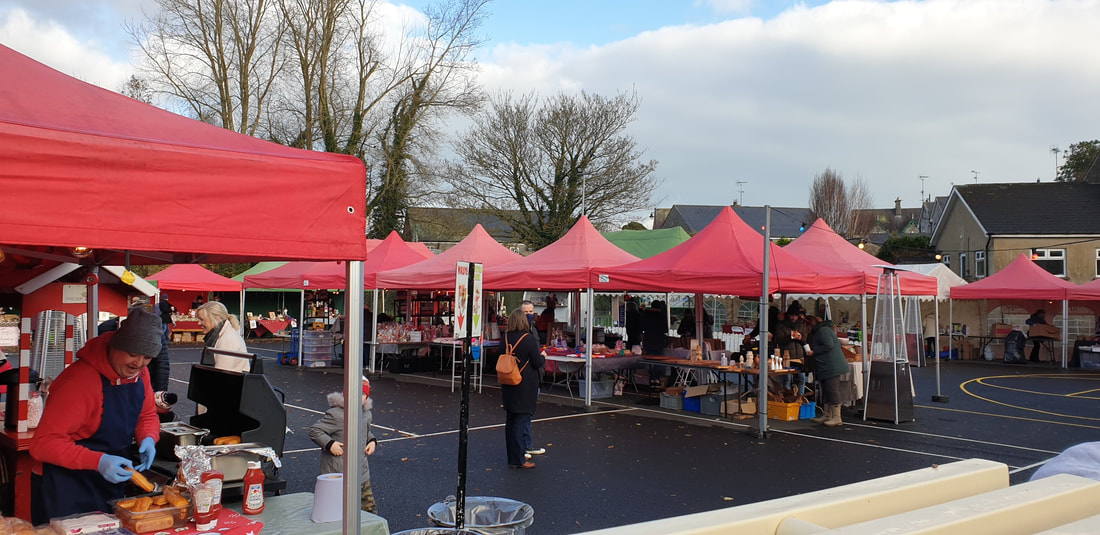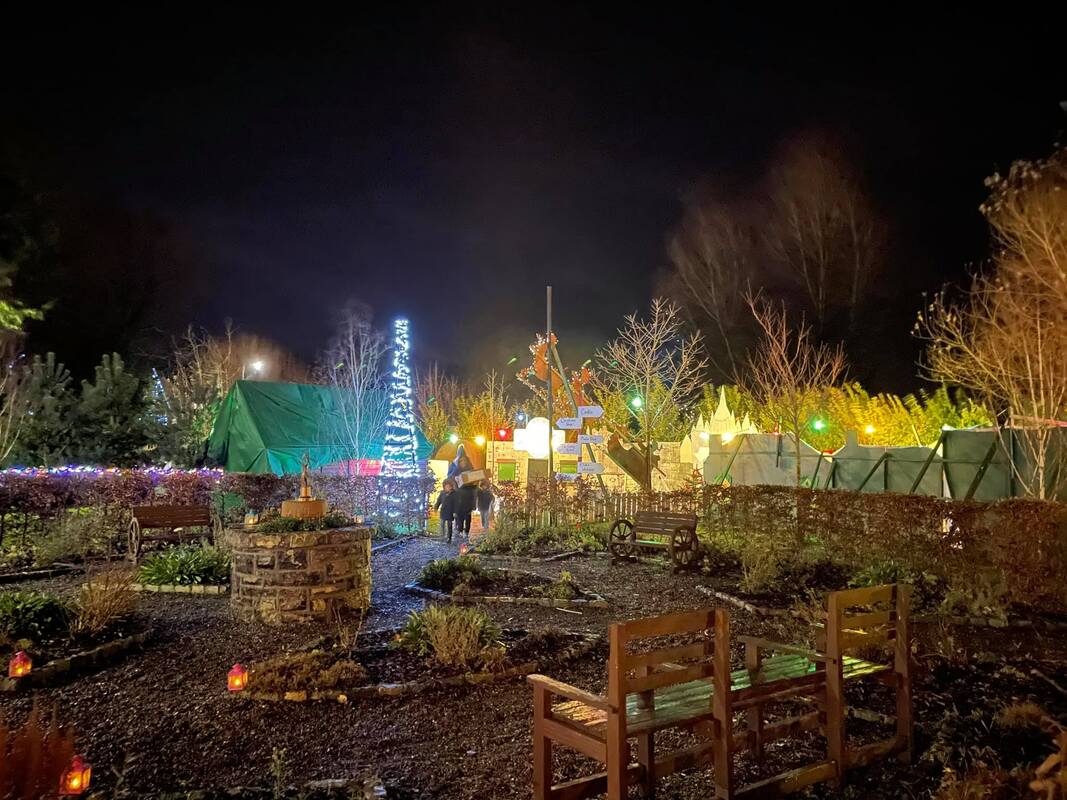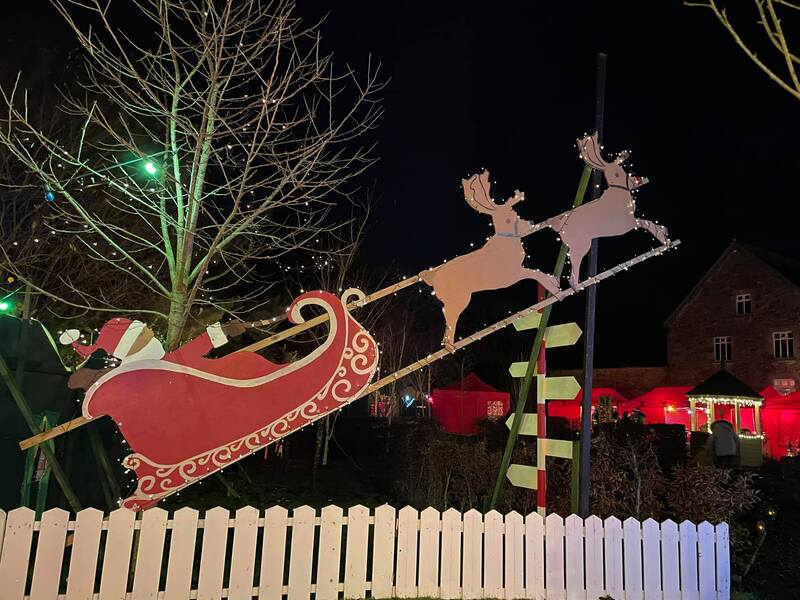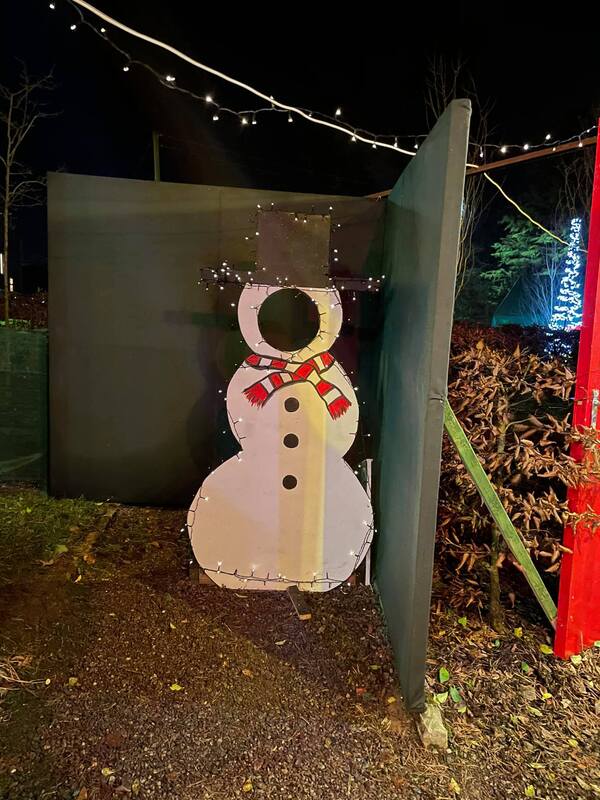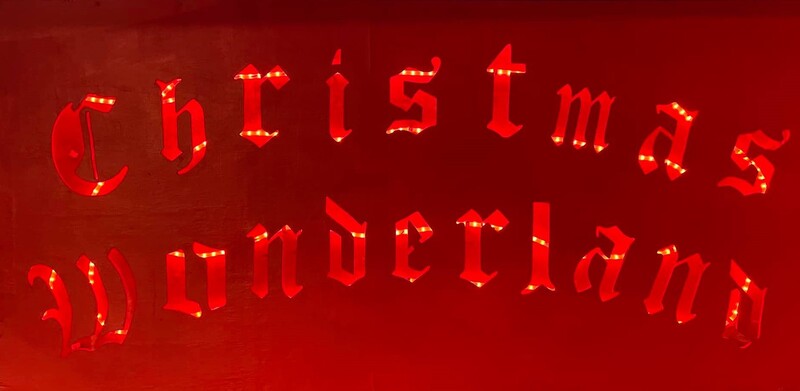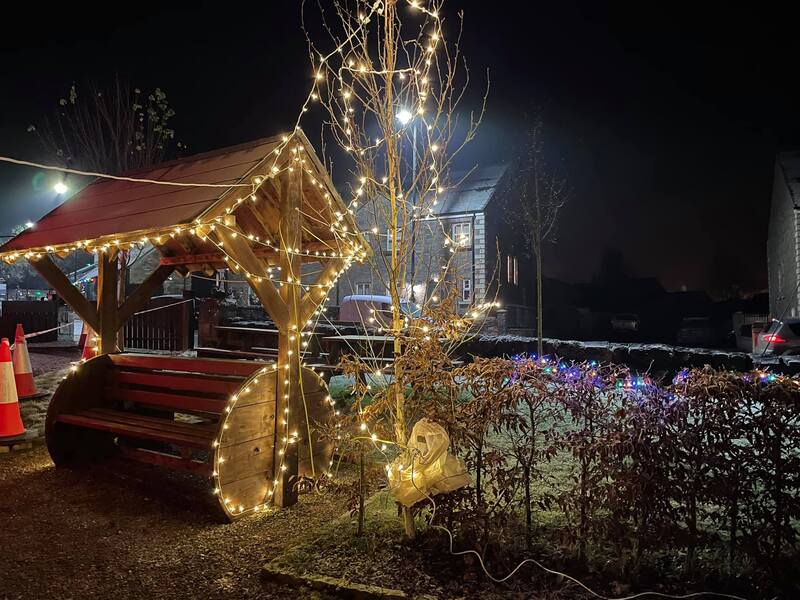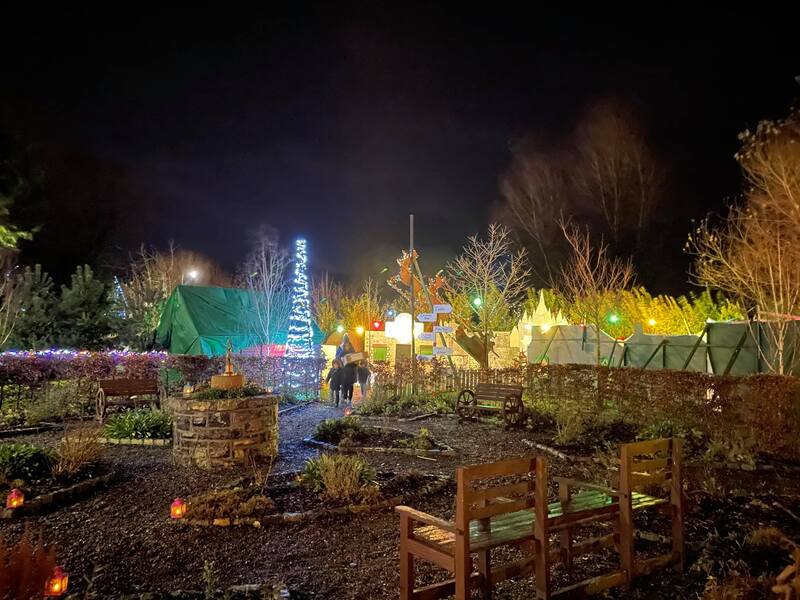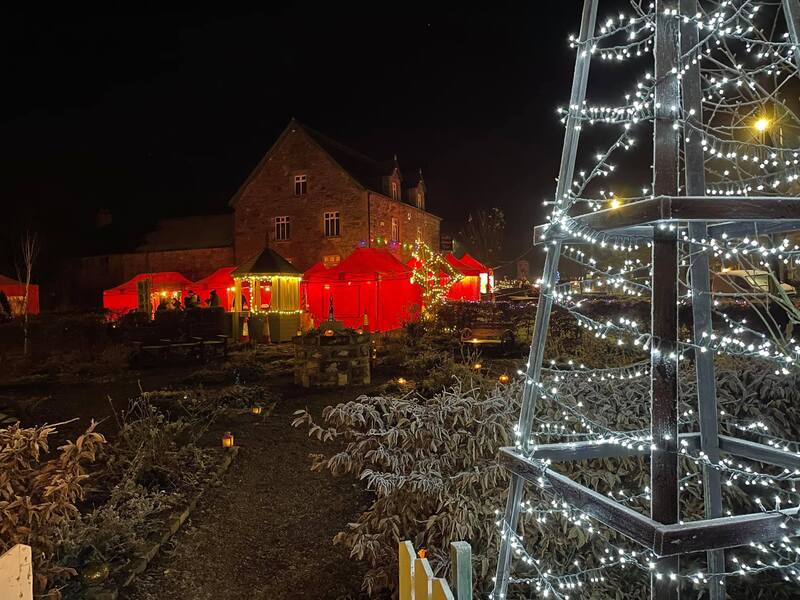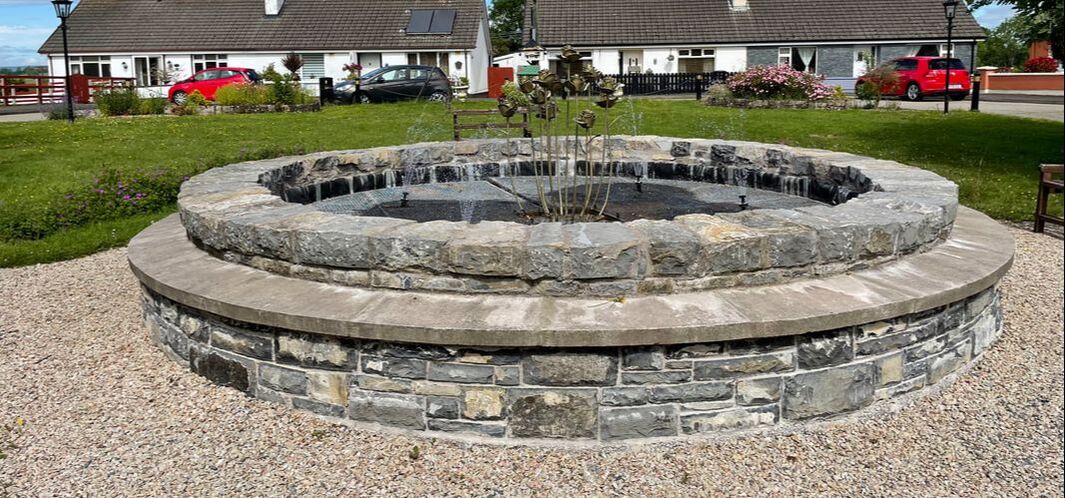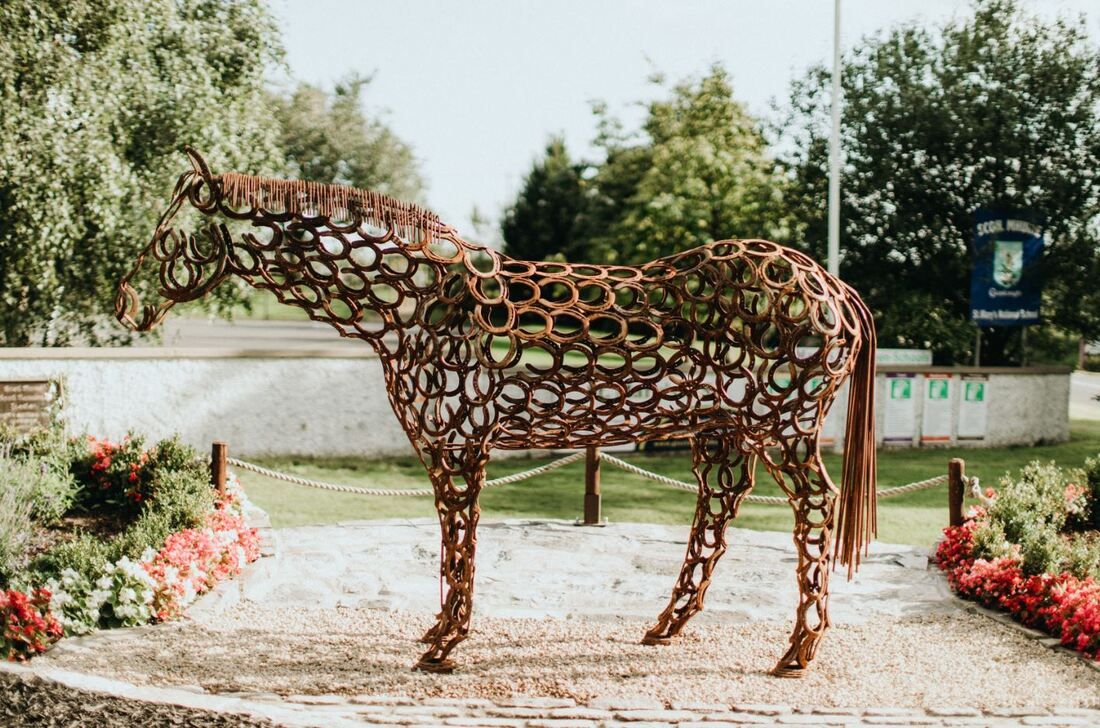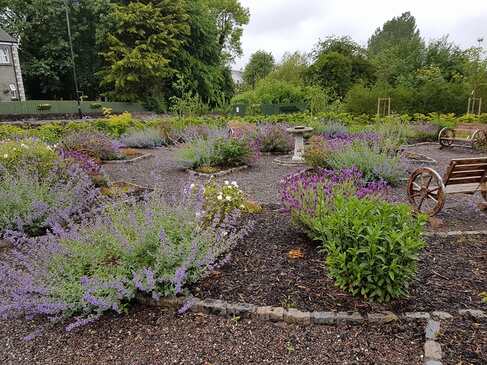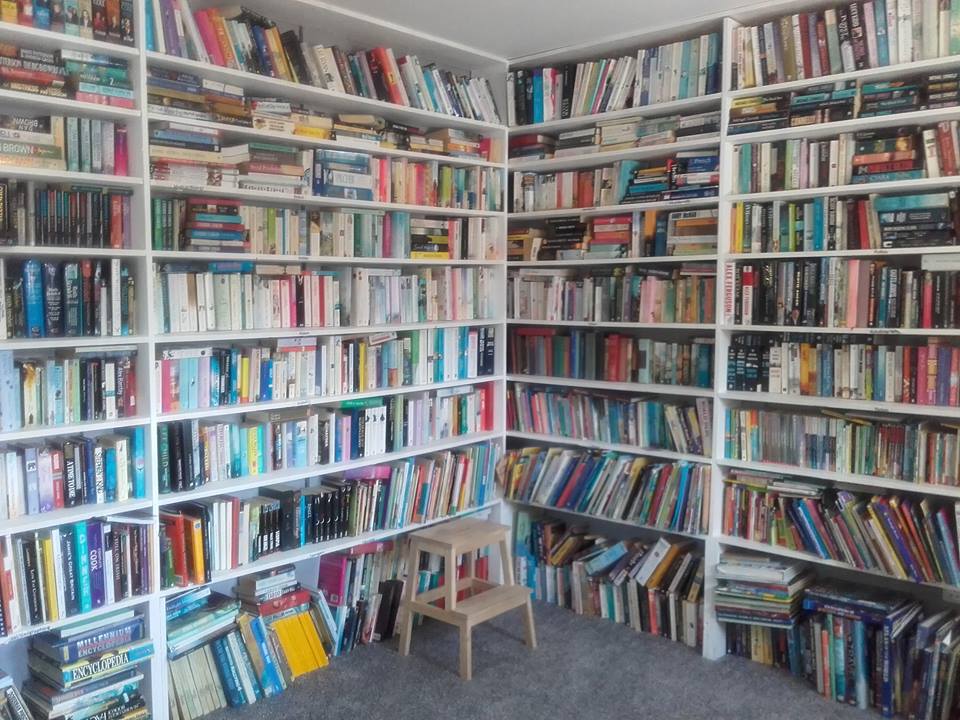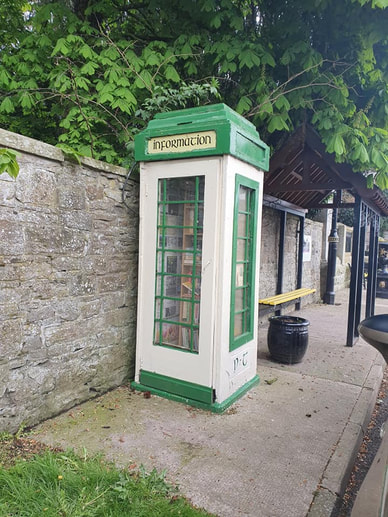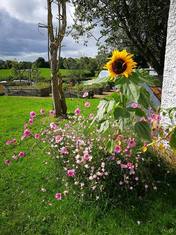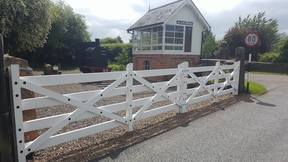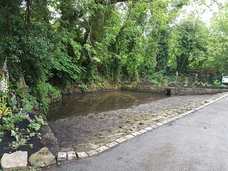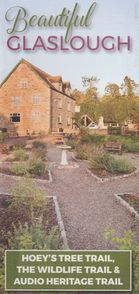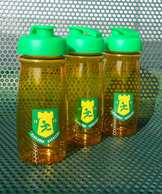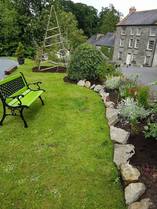Memory lane project 2023
The Memory Lane project was part of the Cruinniu na nOg national project which provides opportunities for children of all ages to take part in creative activities and projects across the country.
The Memory Lane steppingstone path features the names of past loved ones who resided in the Village and surround area.
On Saturday 10th June 2023 the first phase of the Memory Lane project was officially opened by local resident Mrs Dott Boylan aged 96 and Minister Heather Humphries.
On the opening day the families of the past residence attended. The local children and family members remembered their loved ones by reading out a short profile about each one which you will see on this plaque accompanied by some photographs of them.
The Memory Lane steppingstone path features the names of past loved ones who resided in the Village and surround area.
On Saturday 10th June 2023 the first phase of the Memory Lane project was officially opened by local resident Mrs Dott Boylan aged 96 and Minister Heather Humphries.
On the opening day the families of the past residence attended. The local children and family members remembered their loved ones by reading out a short profile about each one which you will see on this plaque accompanied by some photographs of them.
Sensory garden
Spring 2022 seen the construction of a new garden in Glaslough, this garden was built as a special place to visit for those with sensory needs and as a quiet space to visit. The garden was officially opened by Keenan Cully in June 2022.
New outdoor Seated area in The Coach garden
In April 2021 the foundations were dug out for our new outdoor community seated area in the Coach Garden. The beautiful natural stone work and craftmanship by the community employment workers has served as a great asset to the Village over the year and will do so for years to come.
National Tidy Town award Replica
In 2020 a replica of the National Tidy Towns Award which we won in 2019 was made and in September of that year it took pride of place an its natural stone plinth in the beautiful community Coach Garden in the heart of the Village.
Glaslough Outdoor Market
In autumn 2020 Glaslough Tidy Towns were successful in their application for the Covid Acceleration Grand and because of this Grand it enabled us to acquire over 30 Gazebos with the aim of starting an outdoor monthly Market. In June 2021 on the last Saturday of the month our monthly Market began and it has been running every month since with great success.
Christmas winter wonderland
The outdoor Christmas Winter Wonderland was created in The Coach Garden in 2020 and continued in 2021. A whole Santa village was built and run with the help of our Community Employment workers and Volunteers.
Families can experience a wonderful Christmas Wonderland over two days at the beginning of December where they can visit the Christmas Wonderland village meet Santa and receive gifts
Families can experience a wonderful Christmas Wonderland over two days at the beginning of December where they can visit the Christmas Wonderland village meet Santa and receive gifts
Florale Fountain
This project was completely in 2020 with a walkway up to fountain which was lanscaped in a Victorian style. It was built from limestone and also featured the roses used from the Entente Florale Feature in 2017.
New!! Horse Sculpture 'Percy'
Percy
This piece of artwork was commissioned by Glaslough Tidy Towns in January 2019. Completed in July 2019 this project has become a photo stop opportunity for many visitors to the village. It reflects the long and historic connections between the horse and Glaslough. The horse has played an integral part in the history and development of Glaslough Village dating back more than 350 years when the Leslies family settled in Glaslough. The concept of creating this artwork was one that the local committee had been considering for a number of years. The horse was painstakingly made by local craftsman Alan Gormley who spend many hours and days welding and crafting the horse. The sculpture is modelled on Percy, a firm favourite amongst both staff and guests at the Castle Leslie Equestrian Centre. Percy was also a gift to Castle Leslie from Lady Jane Alexander of the neighboring Caledon estate in County Tyrone. A local farrier named Breen Concannon donated almost all the recycled horseshoes along with other locals which were used for the project., Reusing and recycling of materials is an important consideration for Glaslough Tidy Towns and was very much in keeping with the committee’s aims and objectives.
The design of the plantation surrounding the sculpture was carried out by skilled workers of Donagh Community Employment Scheme. Glaslough Tidy Towns volunteers carried out all the planting and continue to manage this area throughout the year. Heritage plants were planted in keeping with the village natural landscape and heritage plan.
Castle Leslie – The Horse
The horse has played an integral part in the history and development of the village of Glaslough. When the Leslie family settled here, more than 350 years ago, they brought with them a longstanding passion for horses. The Leslie family motto ‘Grip Fast’ was bestowed on the family as a result of equine heroics. The story goes that a young Hungarian Bartholomew Leslie rescued Queen Margaret of Scotland from a river by asking her to ‘grip fast the buckle’ of his belt. This maxim has endured ever since, and today the strong connection between the estate, village and horses remains strong.
The establishment of the Leslie’s at Glaslough was facilitated by further bravery and horsemanship. The estate was purchased in 1665 by John Leslie the Bishop of Clogher. Bishop John was better known as the ‘Fighting Bishop’, a nickname he earned as result of his bravery in defeating Cromwell’s forces at the Battle of Raphoe. On the Restoration of Charles II, the Bishop, then aged 90, rode from Chester to London in twenty-four hours. As a reward for his loyalty, the King granted him £2,000 which he used to acquire the Glaslough Castle and Demesne.
Glaslough Village was laid out by the Fighting Bishop’s great-great- grandson, Charles Powell Leslie III and completed by his brother John, later Sir John Leslie, 1st Baronet of Glaslough. The Village was designed to accommodate horses, carts and carriages. Although somewhat altered, the historic thoroughfares are still clearly visible. Horses allowed the village of Glaslough to develop. Before the establishment of the Railway at Glaslough and for many years after, horses facilitated the transport of goods to and from this rural area. A regular fair was held in Glaslough which attracted crowds from near and far.
This piece of artwork was commissioned by Glaslough Tidy Towns in January 2019. Completed in July 2019 this project has become a photo stop opportunity for many visitors to the village. It reflects the long and historic connections between the horse and Glaslough. The horse has played an integral part in the history and development of Glaslough Village dating back more than 350 years when the Leslies family settled in Glaslough. The concept of creating this artwork was one that the local committee had been considering for a number of years. The horse was painstakingly made by local craftsman Alan Gormley who spend many hours and days welding and crafting the horse. The sculpture is modelled on Percy, a firm favourite amongst both staff and guests at the Castle Leslie Equestrian Centre. Percy was also a gift to Castle Leslie from Lady Jane Alexander of the neighboring Caledon estate in County Tyrone. A local farrier named Breen Concannon donated almost all the recycled horseshoes along with other locals which were used for the project., Reusing and recycling of materials is an important consideration for Glaslough Tidy Towns and was very much in keeping with the committee’s aims and objectives.
The design of the plantation surrounding the sculpture was carried out by skilled workers of Donagh Community Employment Scheme. Glaslough Tidy Towns volunteers carried out all the planting and continue to manage this area throughout the year. Heritage plants were planted in keeping with the village natural landscape and heritage plan.
Castle Leslie – The Horse
The horse has played an integral part in the history and development of the village of Glaslough. When the Leslie family settled here, more than 350 years ago, they brought with them a longstanding passion for horses. The Leslie family motto ‘Grip Fast’ was bestowed on the family as a result of equine heroics. The story goes that a young Hungarian Bartholomew Leslie rescued Queen Margaret of Scotland from a river by asking her to ‘grip fast the buckle’ of his belt. This maxim has endured ever since, and today the strong connection between the estate, village and horses remains strong.
The establishment of the Leslie’s at Glaslough was facilitated by further bravery and horsemanship. The estate was purchased in 1665 by John Leslie the Bishop of Clogher. Bishop John was better known as the ‘Fighting Bishop’, a nickname he earned as result of his bravery in defeating Cromwell’s forces at the Battle of Raphoe. On the Restoration of Charles II, the Bishop, then aged 90, rode from Chester to London in twenty-four hours. As a reward for his loyalty, the King granted him £2,000 which he used to acquire the Glaslough Castle and Demesne.
Glaslough Village was laid out by the Fighting Bishop’s great-great- grandson, Charles Powell Leslie III and completed by his brother John, later Sir John Leslie, 1st Baronet of Glaslough. The Village was designed to accommodate horses, carts and carriages. Although somewhat altered, the historic thoroughfares are still clearly visible. Horses allowed the village of Glaslough to develop. Before the establishment of the Railway at Glaslough and for many years after, horses facilitated the transport of goods to and from this rural area. A regular fair was held in Glaslough which attracted crowds from near and far.
Community Allotments
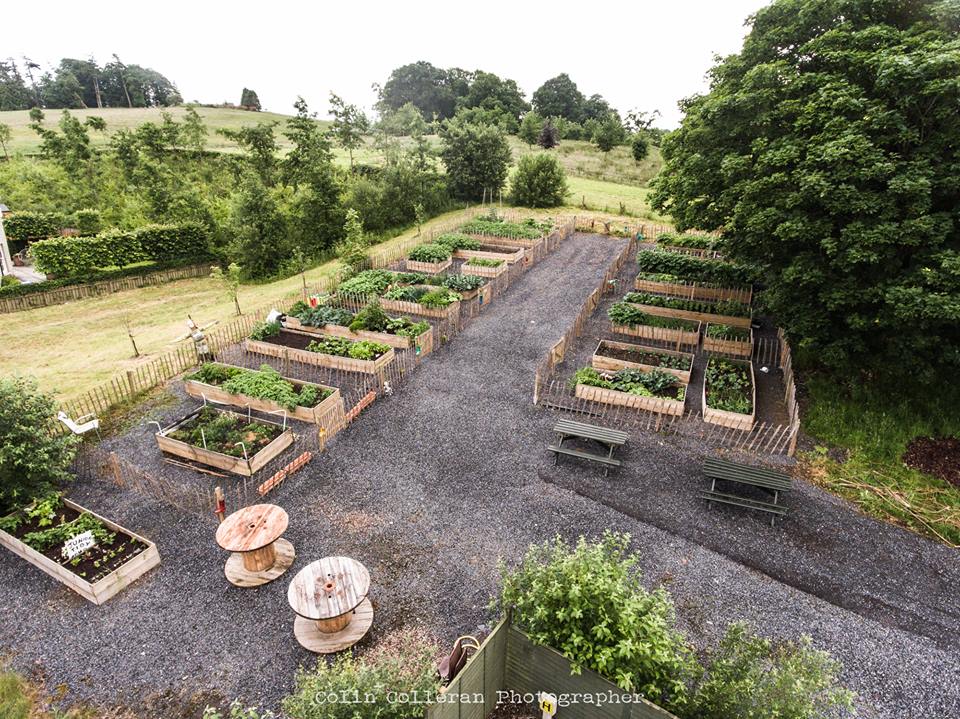
Community Allotment.
Glaslough community allotments was constructed in 2016 and completed in 2017. The land is provided by Castle Leslie to Glaslough Development and Tidy Towns. There are 25 plots with varying sizes of raised beds. The allotments were designed and constructed by Barry Kavanagh together with members of the local community employment scheme as part of a plant care and maintenance course.
Zero Waste

gReener glaslough.
The purpose of this page is to help raise awareness about preventing waste by using the R words that revolve around recycling, repair, rethink, reduce & reuse.
Part of our plans in Sustainable waste & Resource Management.
we created the Facebook page to provide locals & the wider community on tips and advice for preventing waste.
Click on the icon to bring you to the gReener glaslough page.
Landscaping
Community Library
In 2020 due to the COVID 19 Pandemic while the Library was tempory closed, the library moved down to the Village Diamond and took up residence in the old telephone box.

